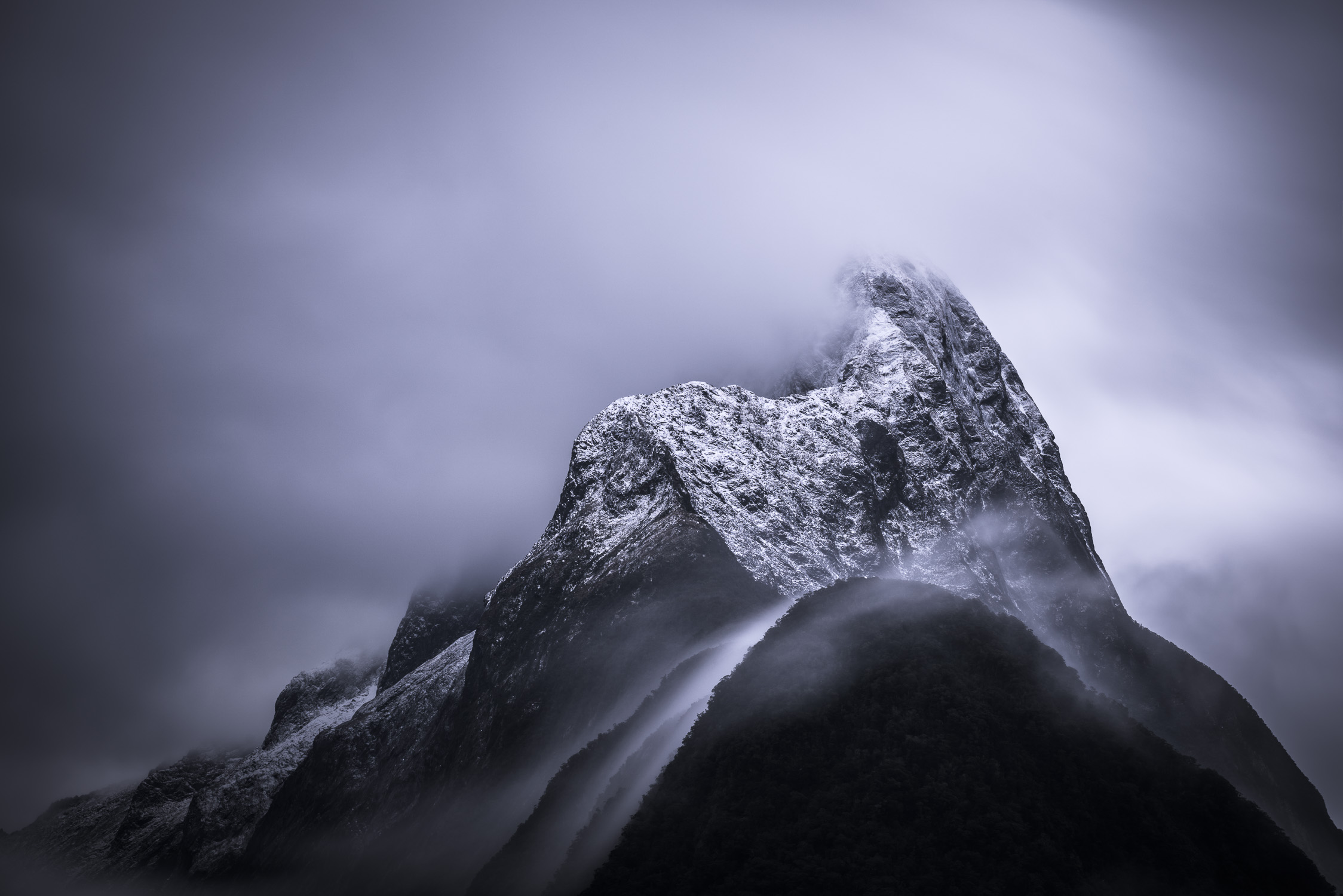27 Questions to Ask in the Field
1) Watch the video lesson and download the eBook here:
Do you analyze your photos in the field while shooting?
Do you have a framework for doing this?
Do you wish you had a toolkit to help you make better decisions in the field?
That’s exactly what this lesson is all about.
It’s easy to look at a photo and know whether you like it or not. But not necessarily WHY you like it or not. By analyzing a photo and thinking through your choices as a photographer you can build a better tool kit for creating awesome photos. This eBook contains 27 simple questions you can ask yourself in the field to ensure you’re doing everything possible to find an interesting subject, to maximize your composition, choose the right camera settings, and get the best light.
2) Review the 27 individual questions and see examples here:
First, remember that every great photo contains four essential elements: a good subject/story, a good composition, good camera technique, and interesting light. If you don’t like a photo it’s because it’s missing one of those things. Let’s look at each one in detail.
Subject
The subject / story is the most important part of any image. If you don’t have a strong subject or story, YOU DON’T HAVE A PHOTO. Period. Here are two simple questions you can ask to improve this part of your photography:
If so, then you’re off to a great start. The best photos tell stories, so think of the story you want to tell of a place when you’re getting your camera out.
This image has pretty light. That’s great, but it’s not enough. What is this photo actually about? Very little…
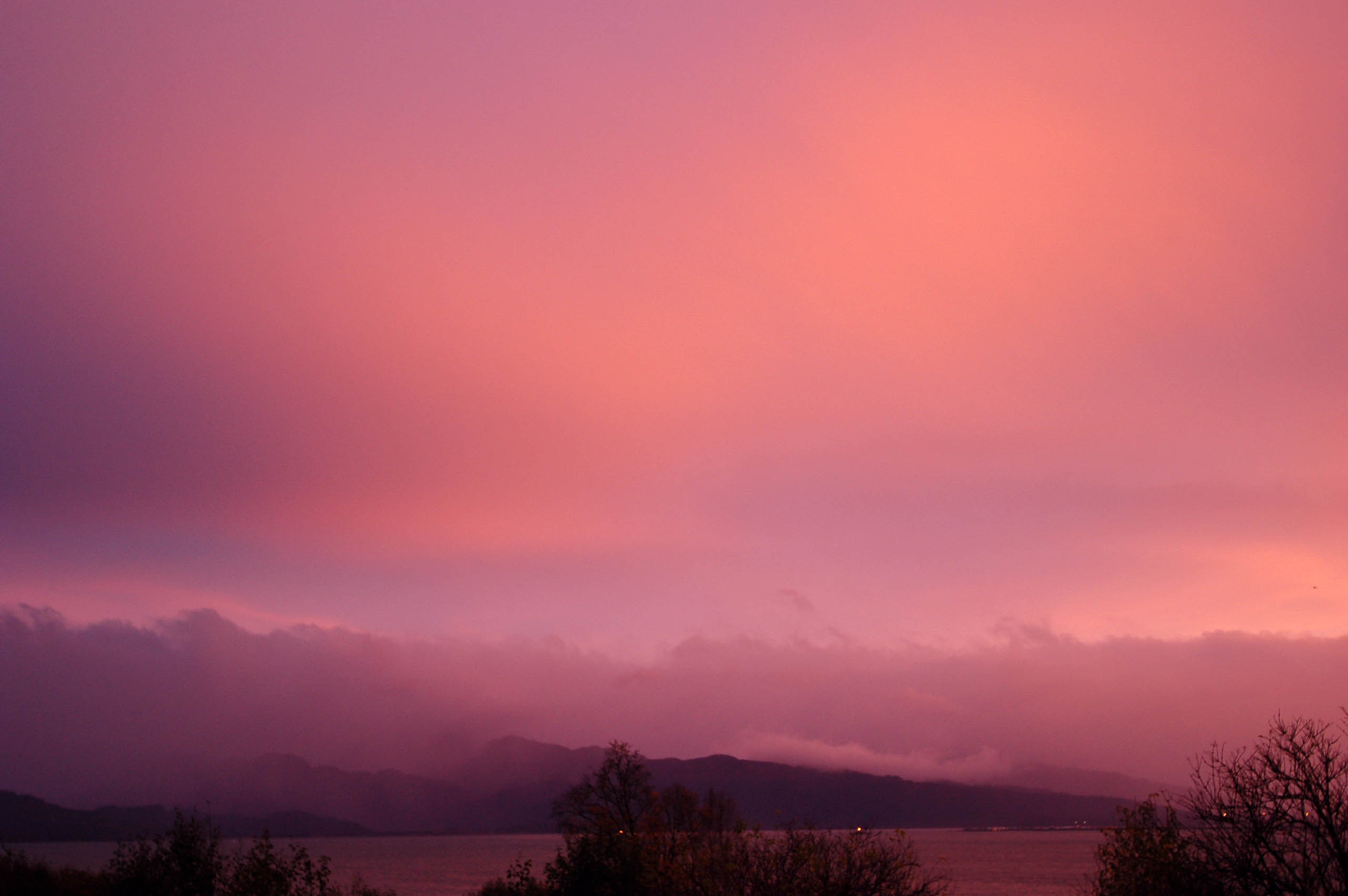
Whereas this photo has great light AND an obvious subject. Much better!
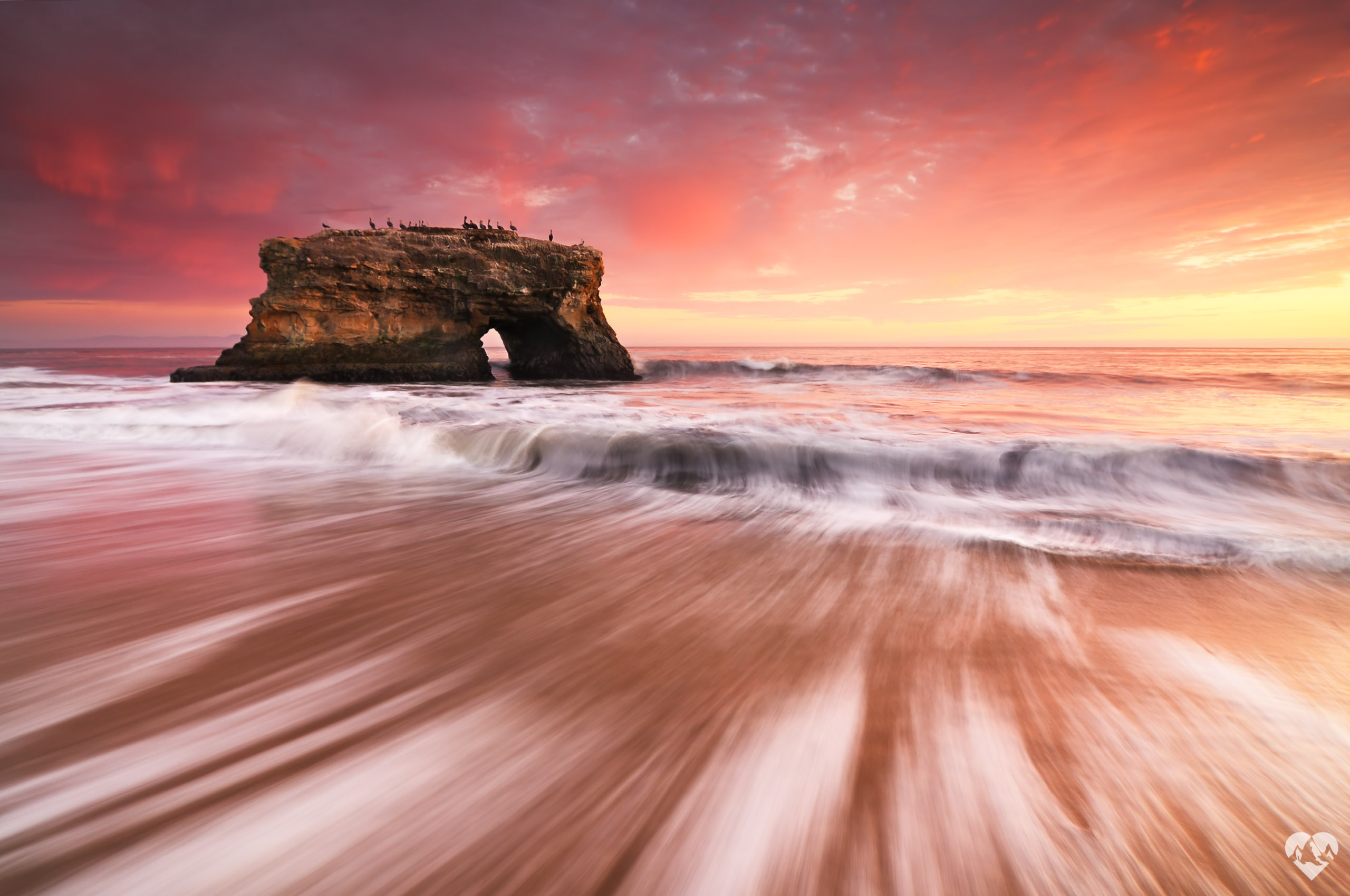
In other words, does it make you feel a strong emotion? If so, that’s even better! Don’t take a photo of a rock just because you think you need a foreground element in your shot. Try to find something that’s meaningful or interesting to you in some way.
Composition
Your composition should show off the most interesting attributes of your subject, while minimizing distractions and other elements not relevant to the story of your photo. Questions you can ask:
Contender for world’s most boring tortoise photo?
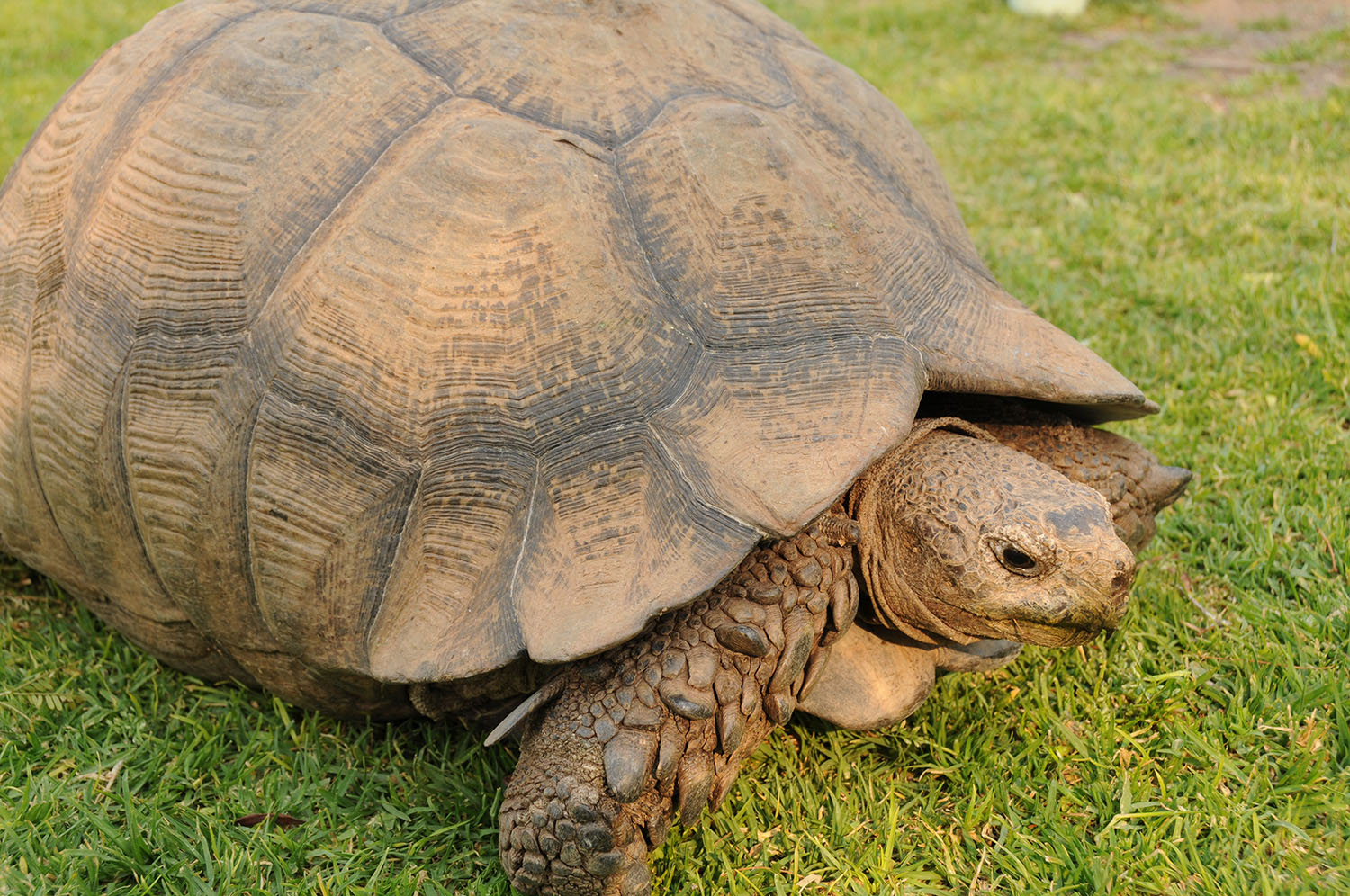
By watching the tortoise’s behavior and photographing it from down low, I created a composition that shows off the interesting characteristics of this particular animal.

Identify the most important parts of the scene in front of you. Fill your frame with just those things.
The next step is to use your comp to show off those things, while removing or minimizing distractions.
Does the composition show off the important features or your subject and demonstrate the relationships you want to showcase?
Here are two photos, each containing the same primary elements: rushing water, rocks, and a mountain getting hit with red light. But notice how the different compositions tell two different stories.
The photo below emphasizes the rushing river, the color of the water, and the texture of the rocks. If that’s what you find most interesting about this scene, then this composition is effective!
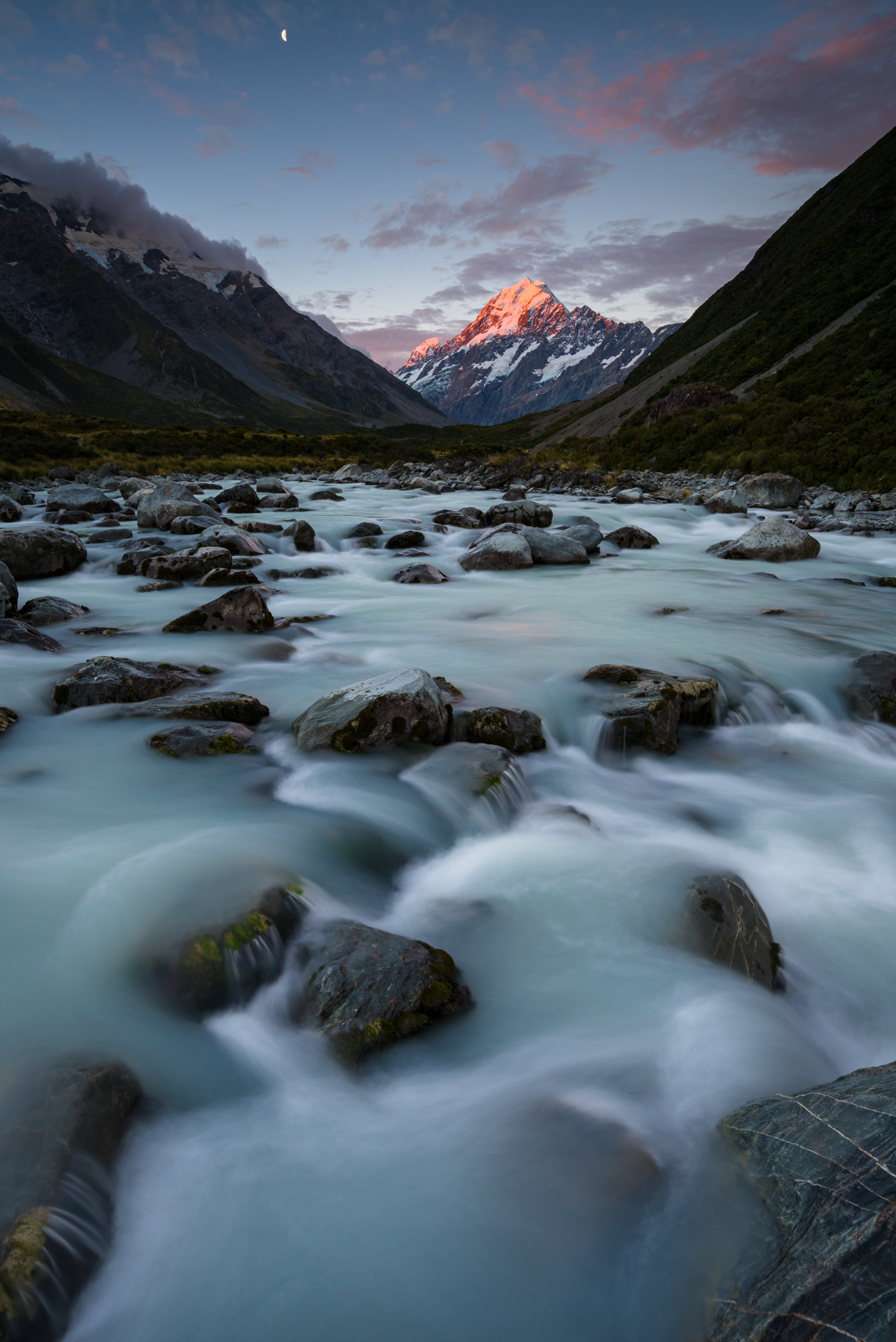
Whereas this photo tells a slightly different story: one of a gigantic mountain that looms over a river valley. If you find the mountain to be the most compelling part of this scene, then you should try for a composition like this.
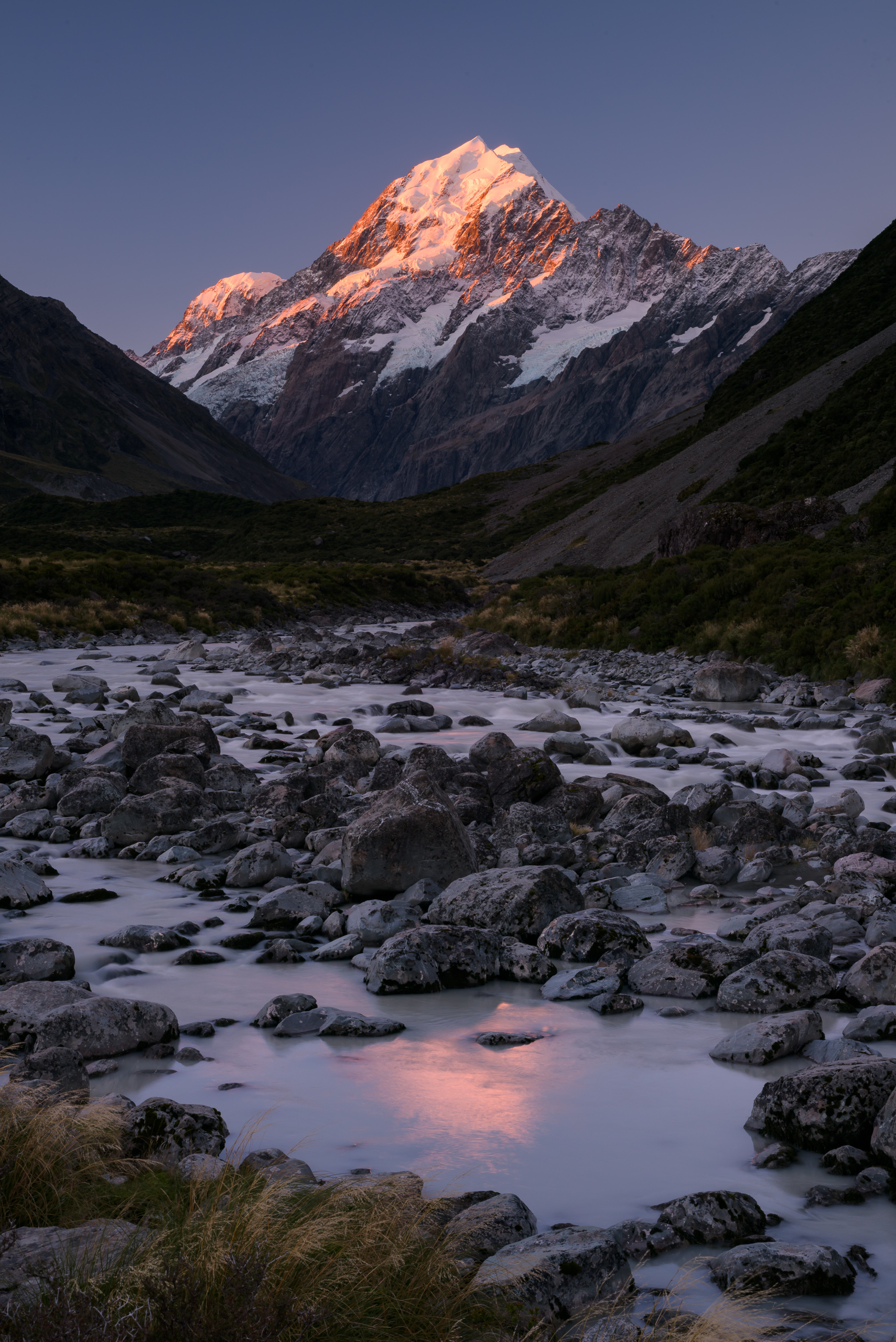
Are there visual roadblocks or other impediments preventing the viewer’s eye from seeing all the important elements?
The most compelling part of this scene to me was the reflection in the water. This composition fails to demonstrate that because the reflection is cut off by the bottom of the frame. This means that one of the most important parts of the image doesn’t have any breathing room around it. Therefore the composition feels off-balance.
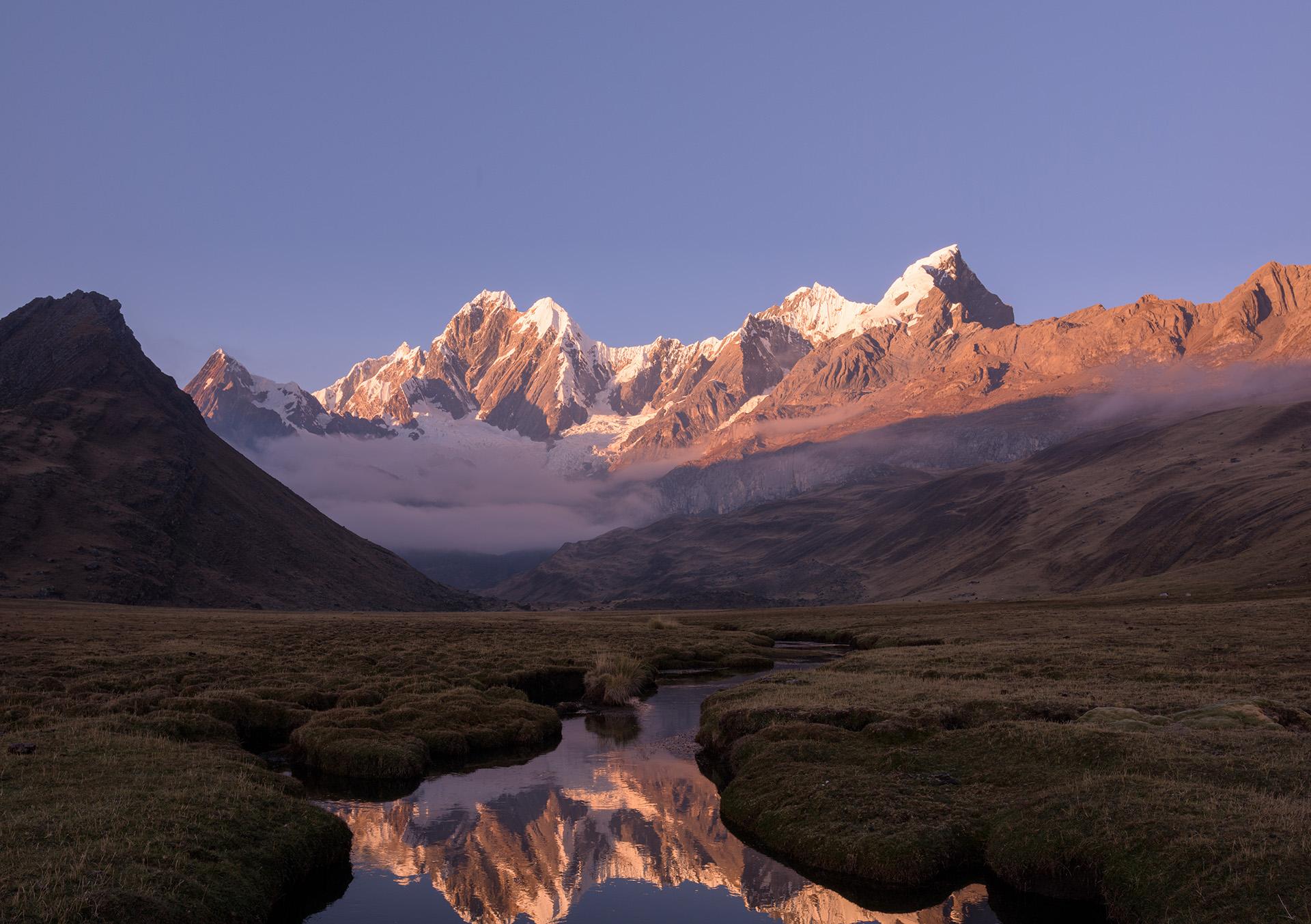
By panning down a little bit I can create far more balance in the frame. Note how the mountains and the reflection have roughly equal weight in the photo. Not only that, but the peaks of the mountains and the peaks in the reflection are spaced almost exactly equally from the top and bottom of the frame. Symmetry is not always necessary when shooting reflections but it is one easy way to create balance. Just remember: important parts of your photo should be unambiguously within the frame, with some “breathing room” around them.
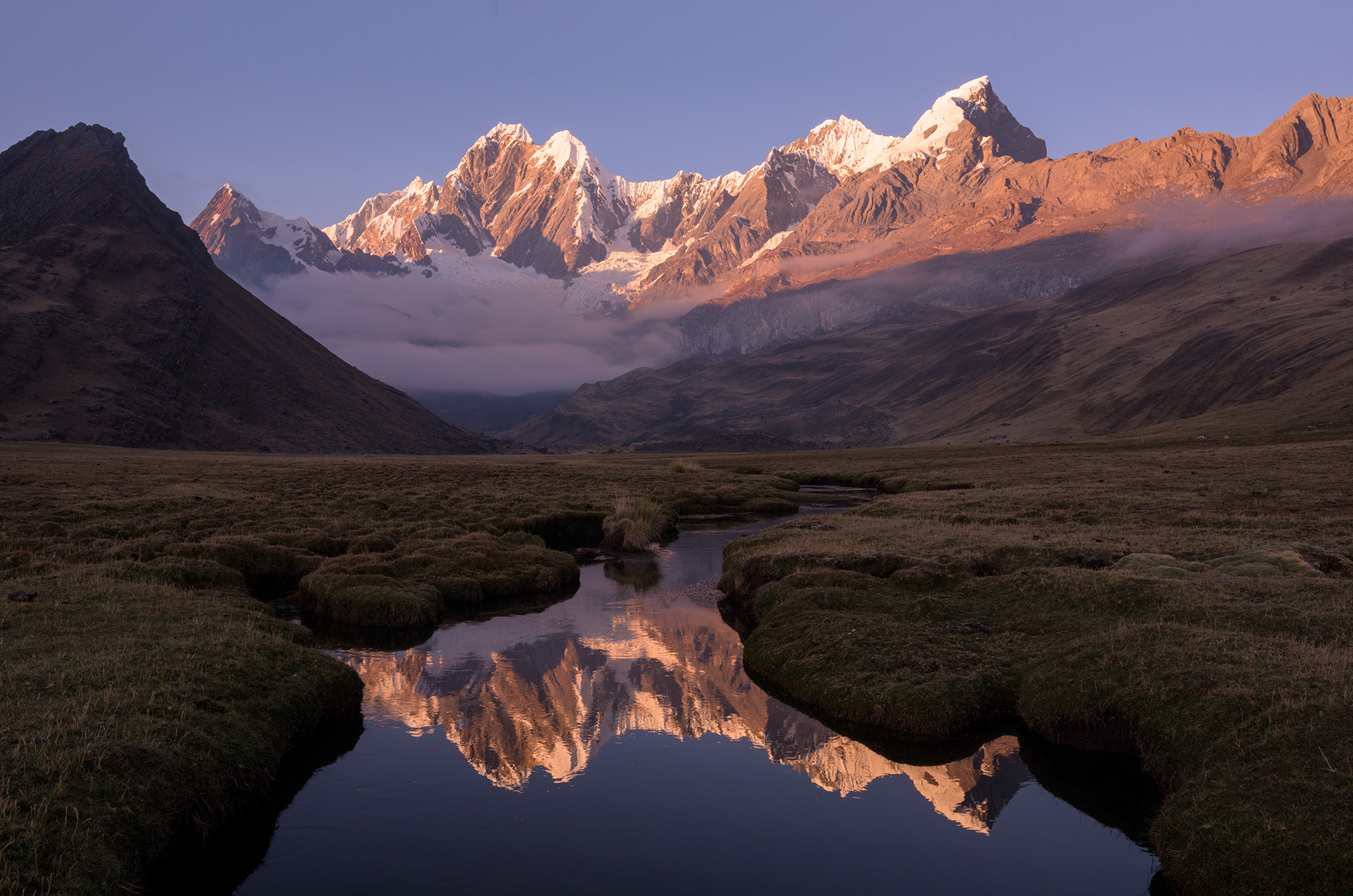
The main focal point of this photo, the arch, is right on the edge of the frame and draws your eye out of the photo. Not good.
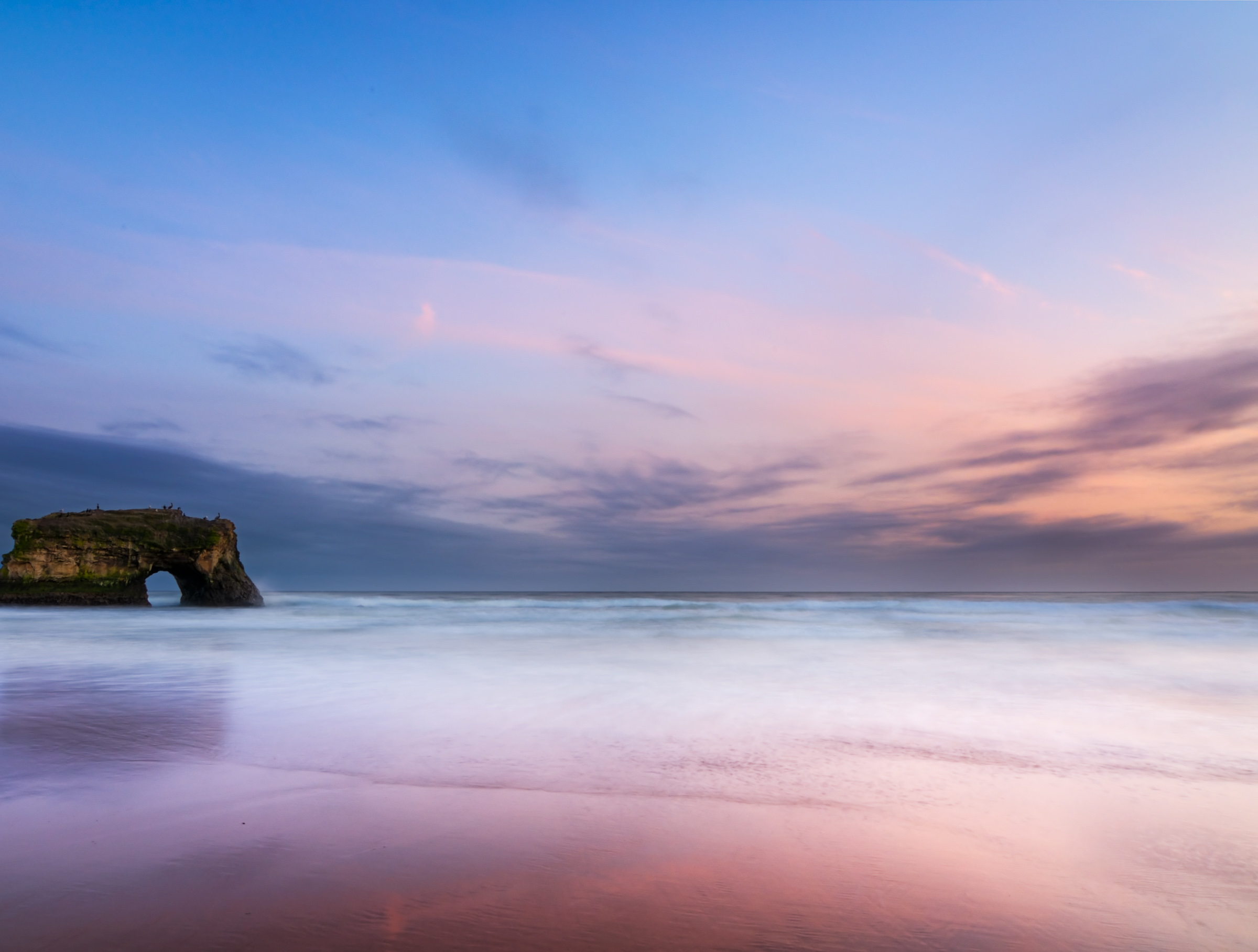
By giving this main element a little breathing room, I can create a much better composition.
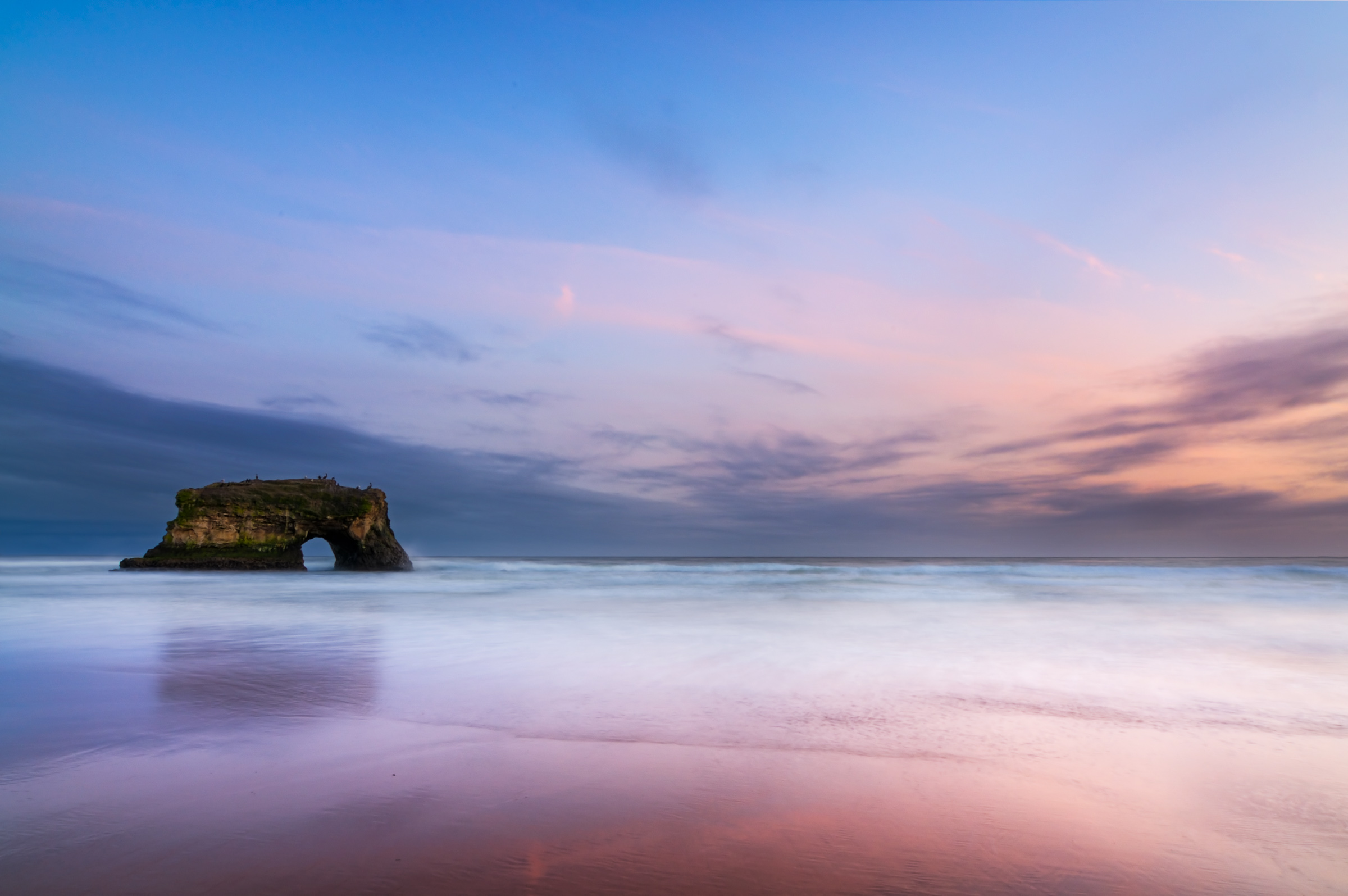
All the interesting parts of this scene, the rock formations and the bird in flight, are all on the right side of the frame, which makes the left feel empty.
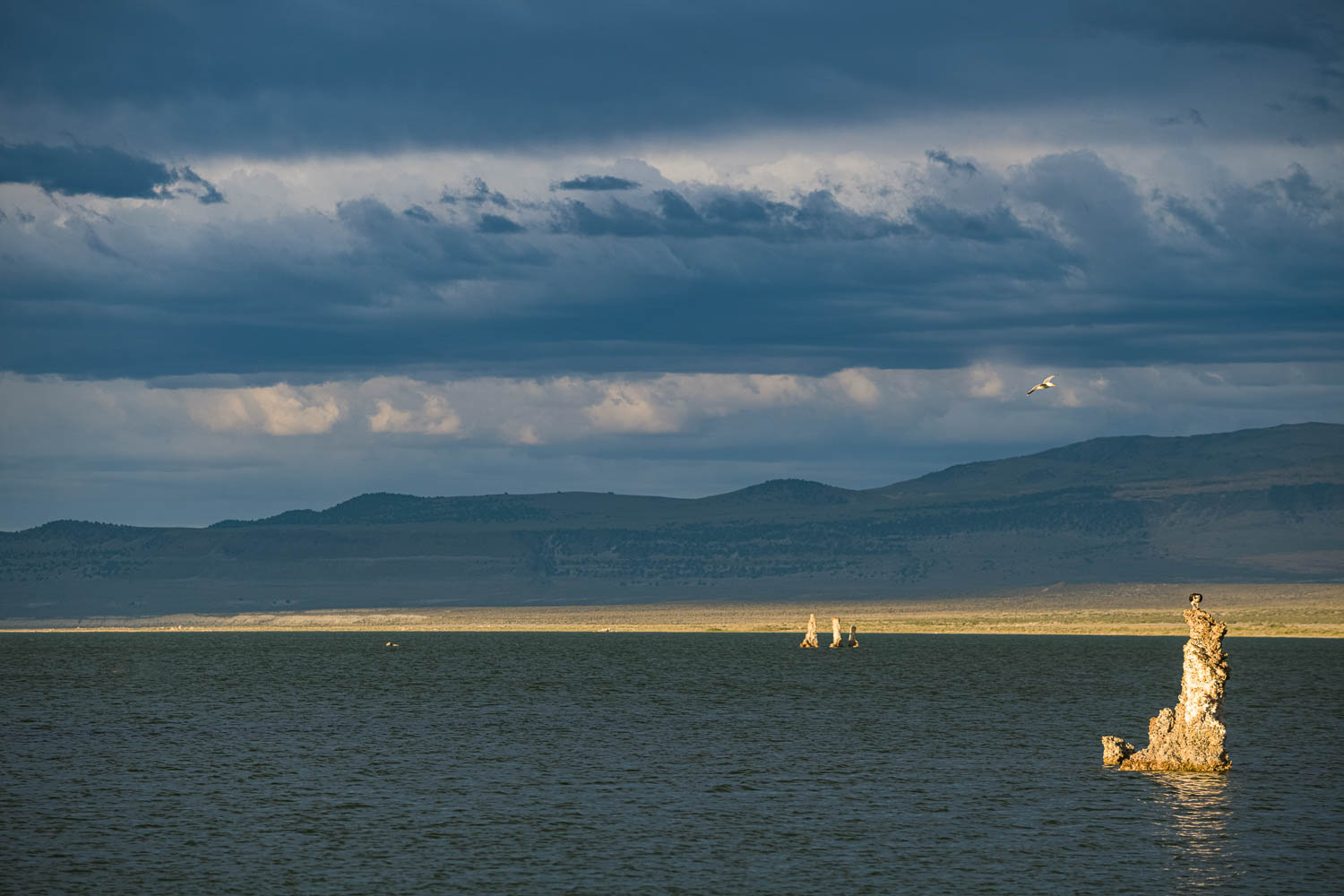
By zooming out a bit and panning left (as well as waiting for the bird to fly across to the left), I can balance the visual weight on both sides of the photo.
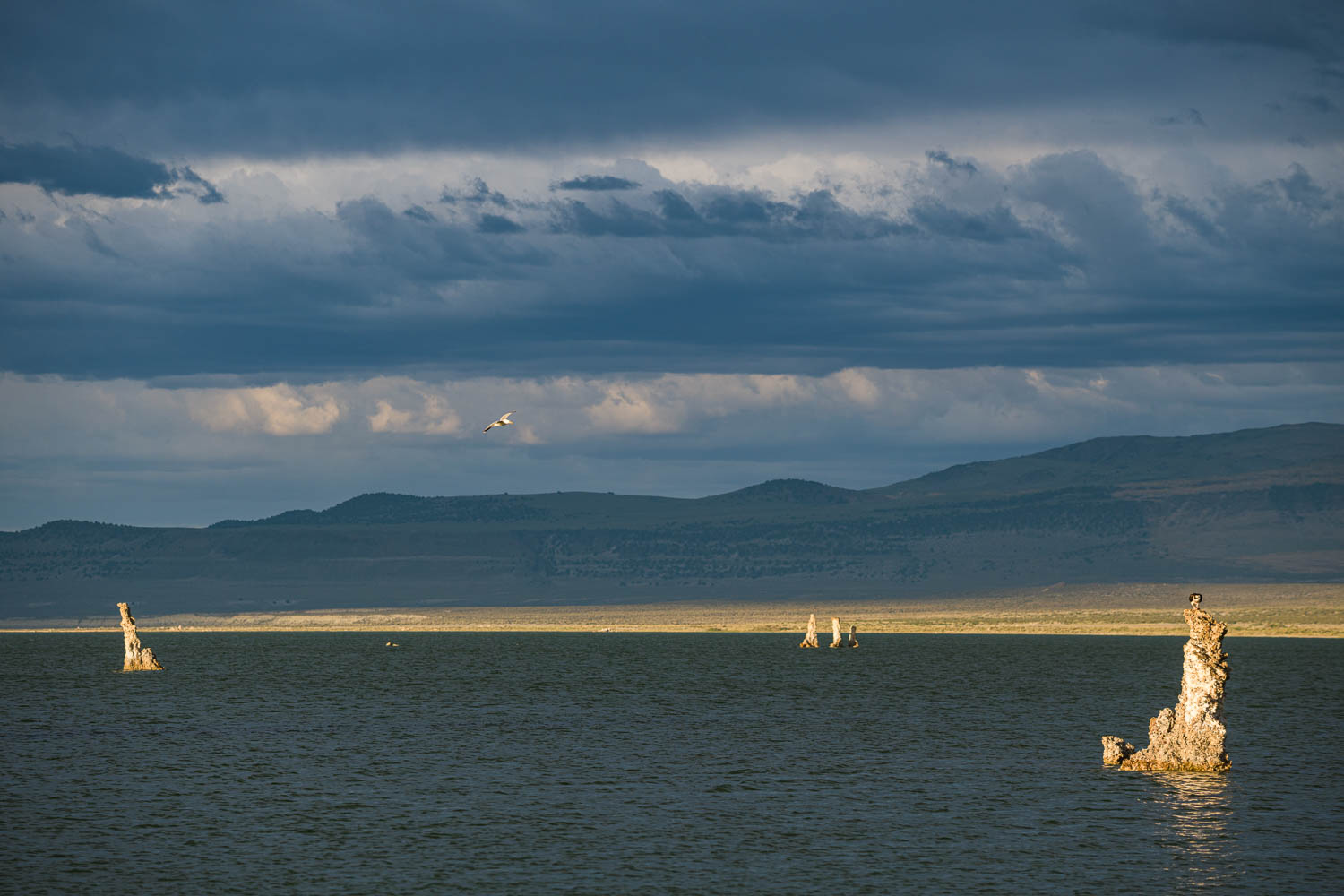
Notice all the empty space in the sky here? If it’s not interesting to you as the photographer, then it’s wasted space in your composition. Fill the frame with what you like and minimize everything else.
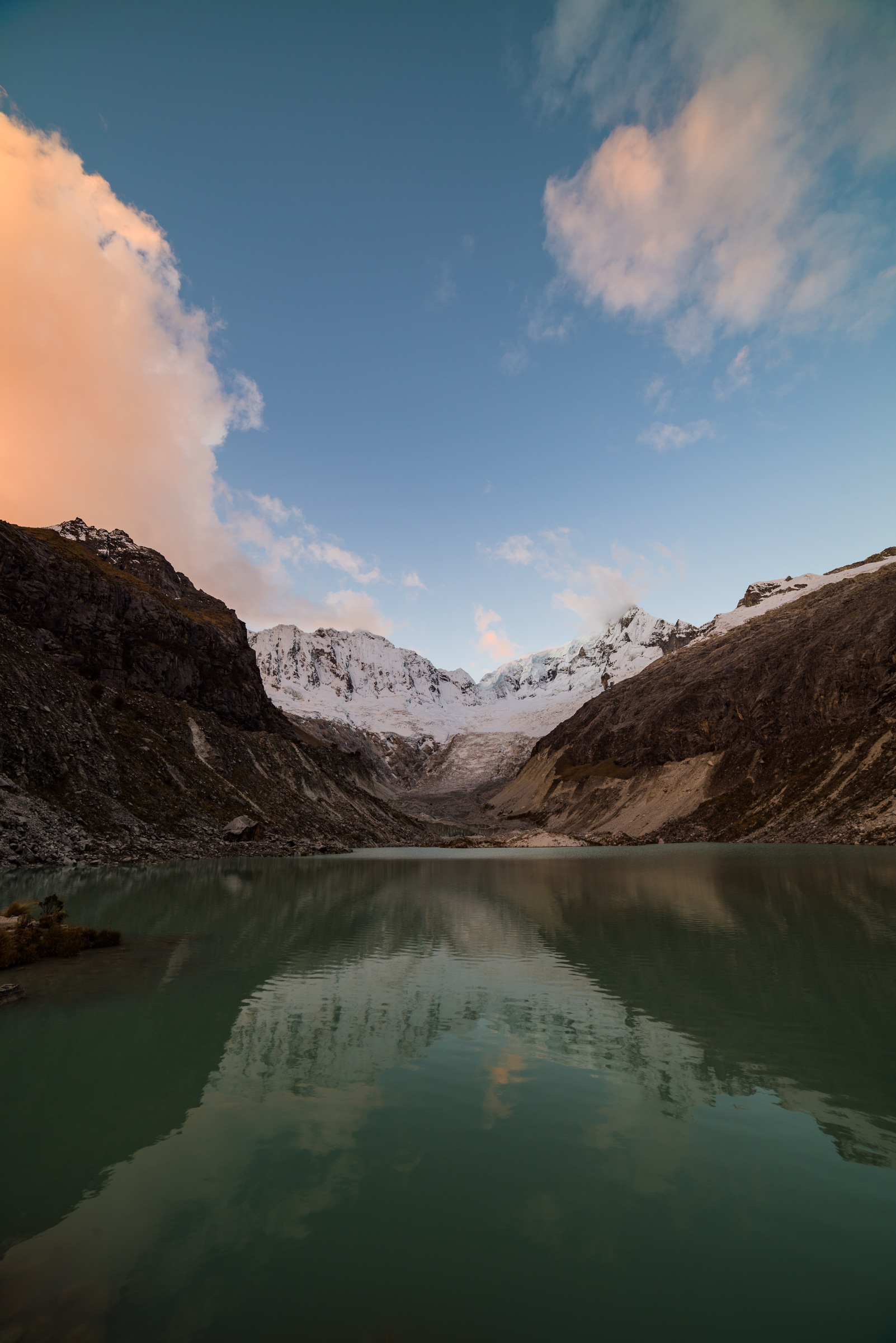
By shooting horizontally instead of vertically, and by panning the camera down a bit, I can include more of what’s interesting to me about this scene, and exclude some of the empty sky and water.

12) Are there distracting elements in the photo like branches cut off or too close to the edges, mountain peaks out of the frame, overly bright or dark spots, etc.?
In this shot I inadvertently cut off the tops of the trees and the mountains. There is also an extremely dark shadow in the lower right that is acting like a giant visual black hole.
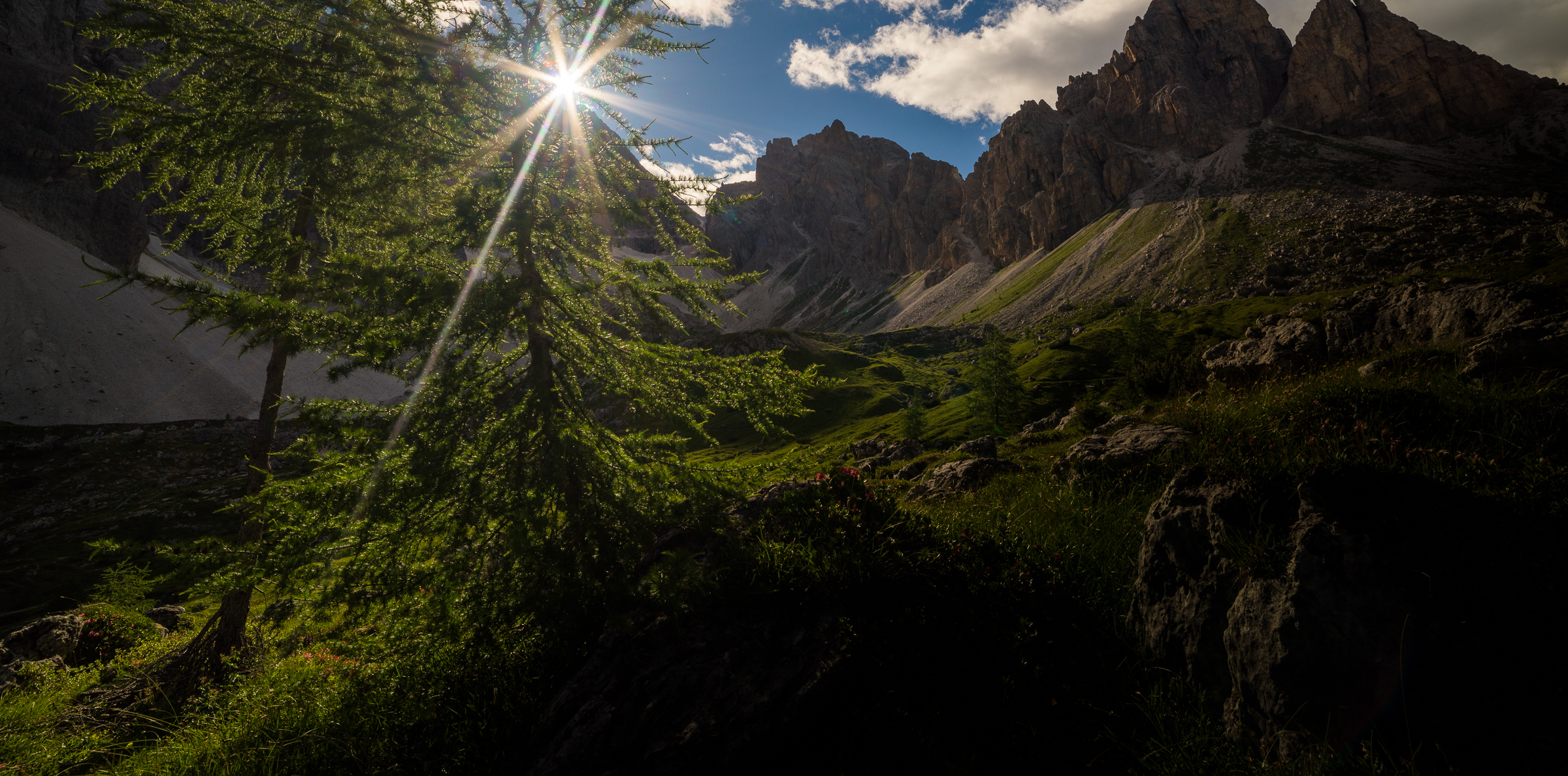
By using a graduated ND filter I was able to increase the relative exposure of the lower right corner of the photo. But in this case it’s overdone and the corner is now too bright. It also pulls attention away from the main subjects of the trees and the mountains.
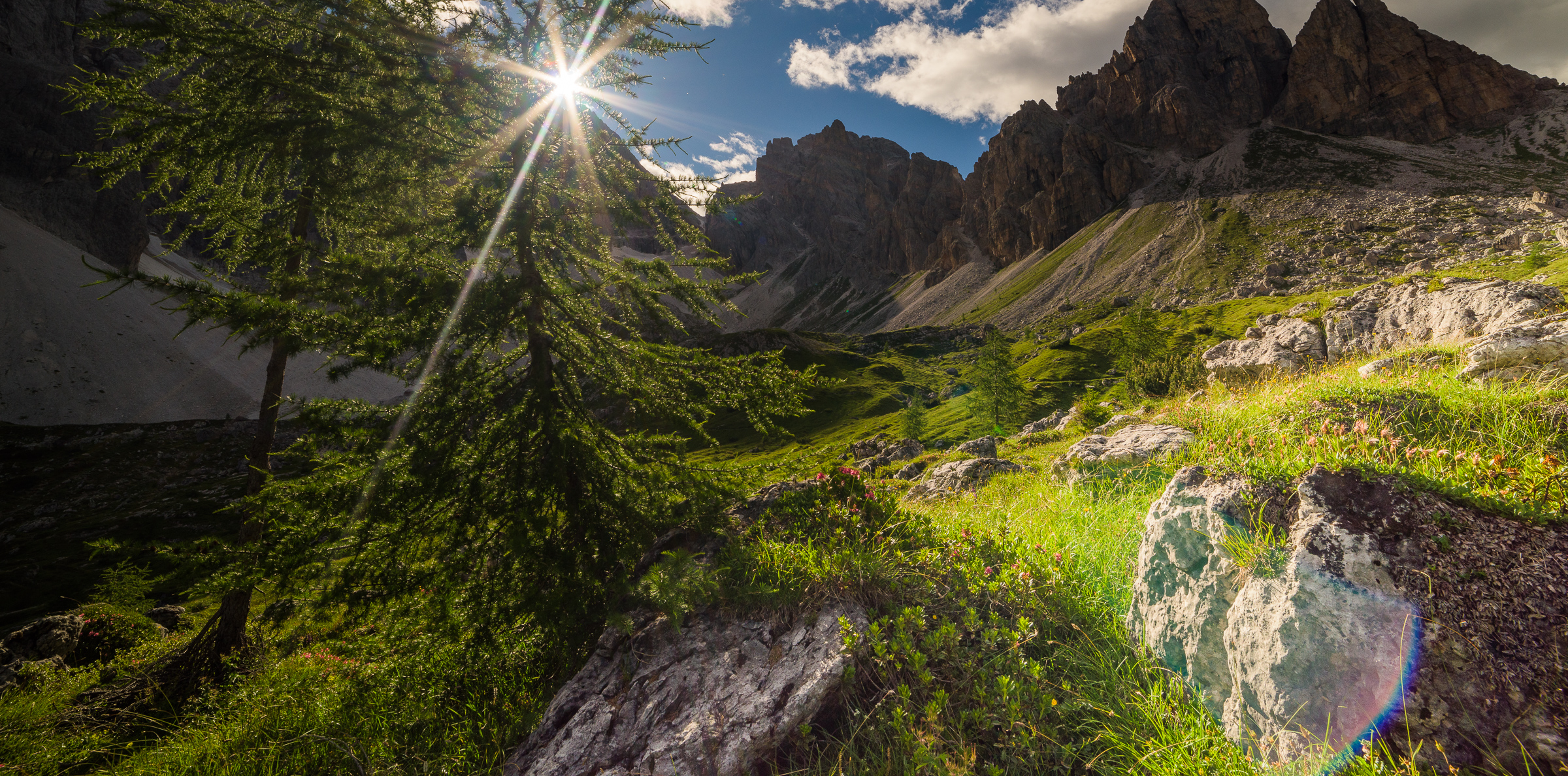
Here I panned up and zoomed out to included the tops of the mountains and trees. They’re no longer cut off, which is great. I also fine tuned the exposure in the lower right. Now the details are visible there but they’re not so bright as to be distracting.
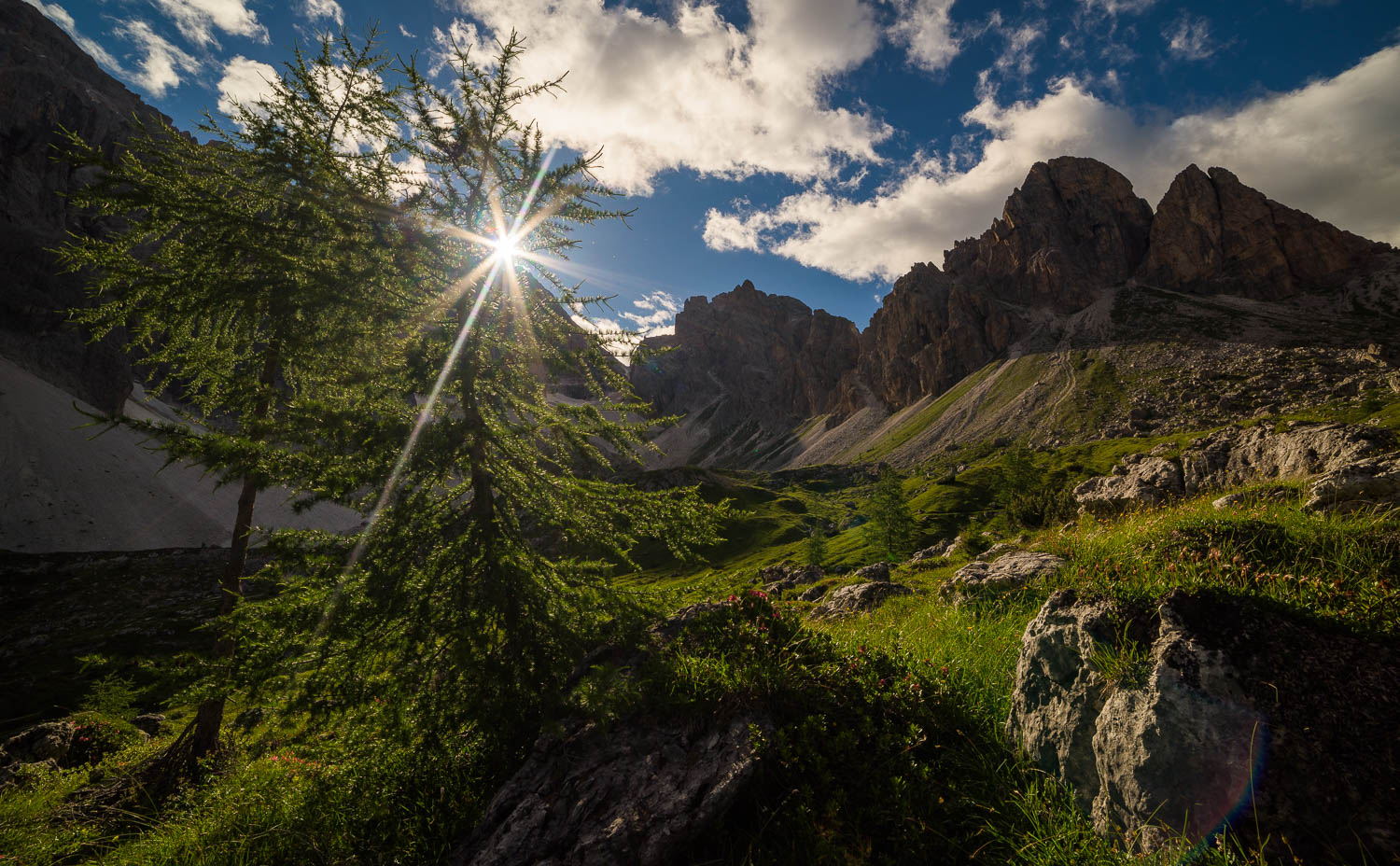
Notice how the tip of that triangular peak can’t be seen in the reflection here? It’s being covered by a piece of ice floating in the lake.
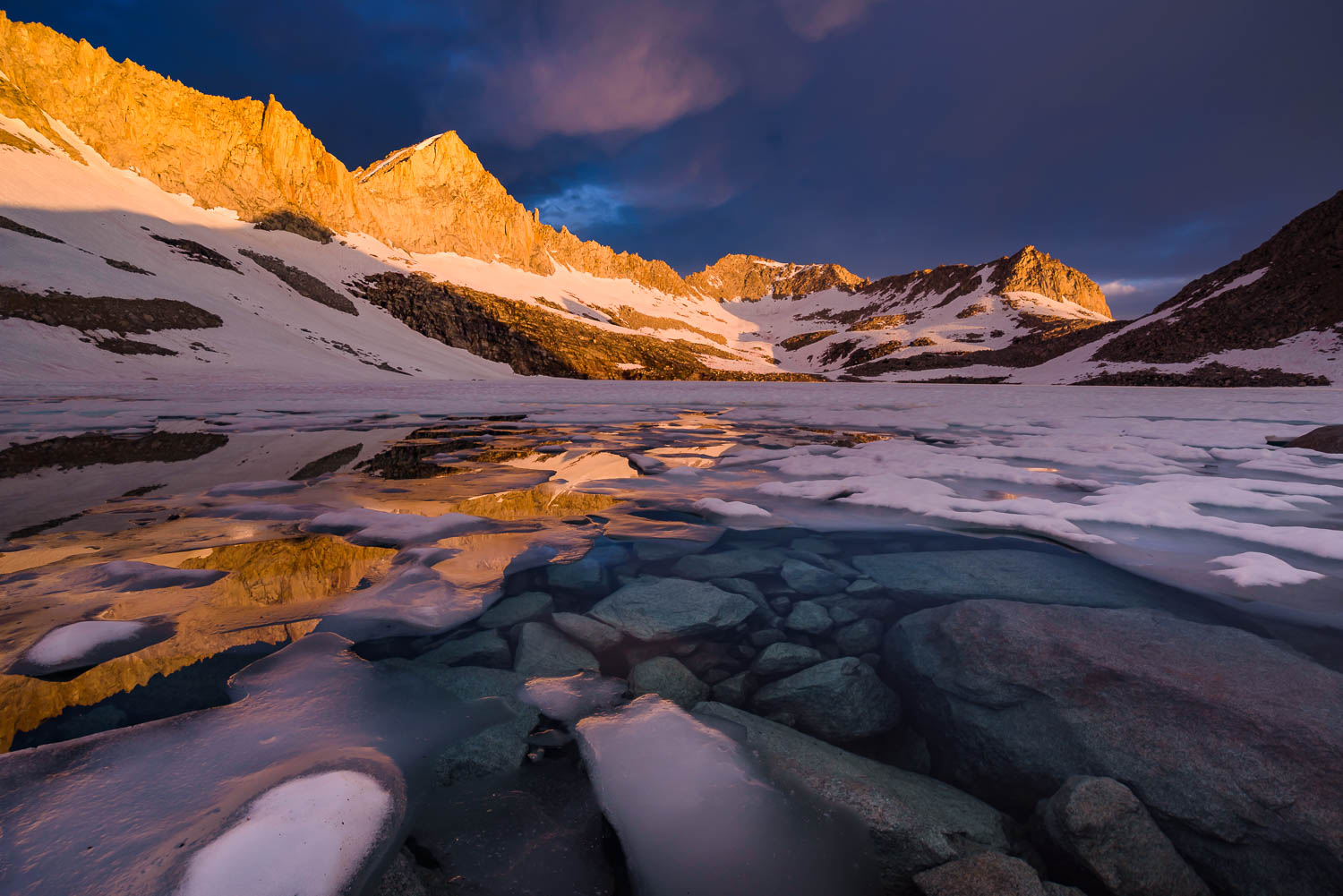
But if I step six inches to my right, the peak appears in the reflection. It’s a small detail but it has two important results: first, it gives the reflection a sense of completeness. Second, the complete reflection helps tie the midground and background together.
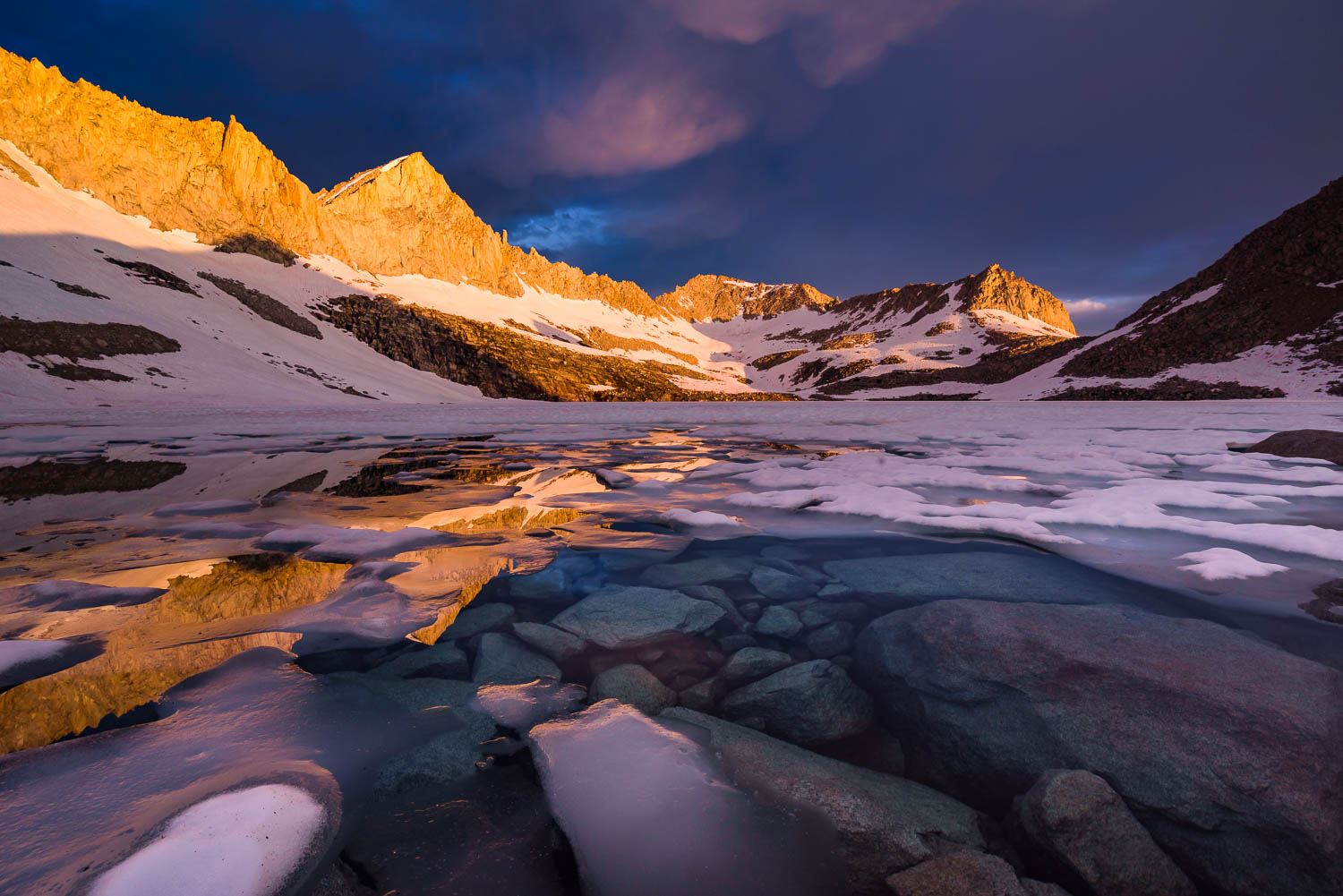
Camera Technique
Good camera technique is about more than just putting your camera on a tripod and getting a good exposure. Always be asking if the settings and choices you make while creating the photo enhance or undermine the story you’re trying to tell.
Kind of a no-brainer question, but always worth asking. It’s too easy to forget you switched your ISO to 3200 the day before to shoot stars. Do a sanity check.
Everything you want the viewer to notice should be in focus.
This photo was shot with a shallow depth of field. The mountains in the background are out of focus, which draws more attention to the sharp details in the grass and cascade in the foreground.
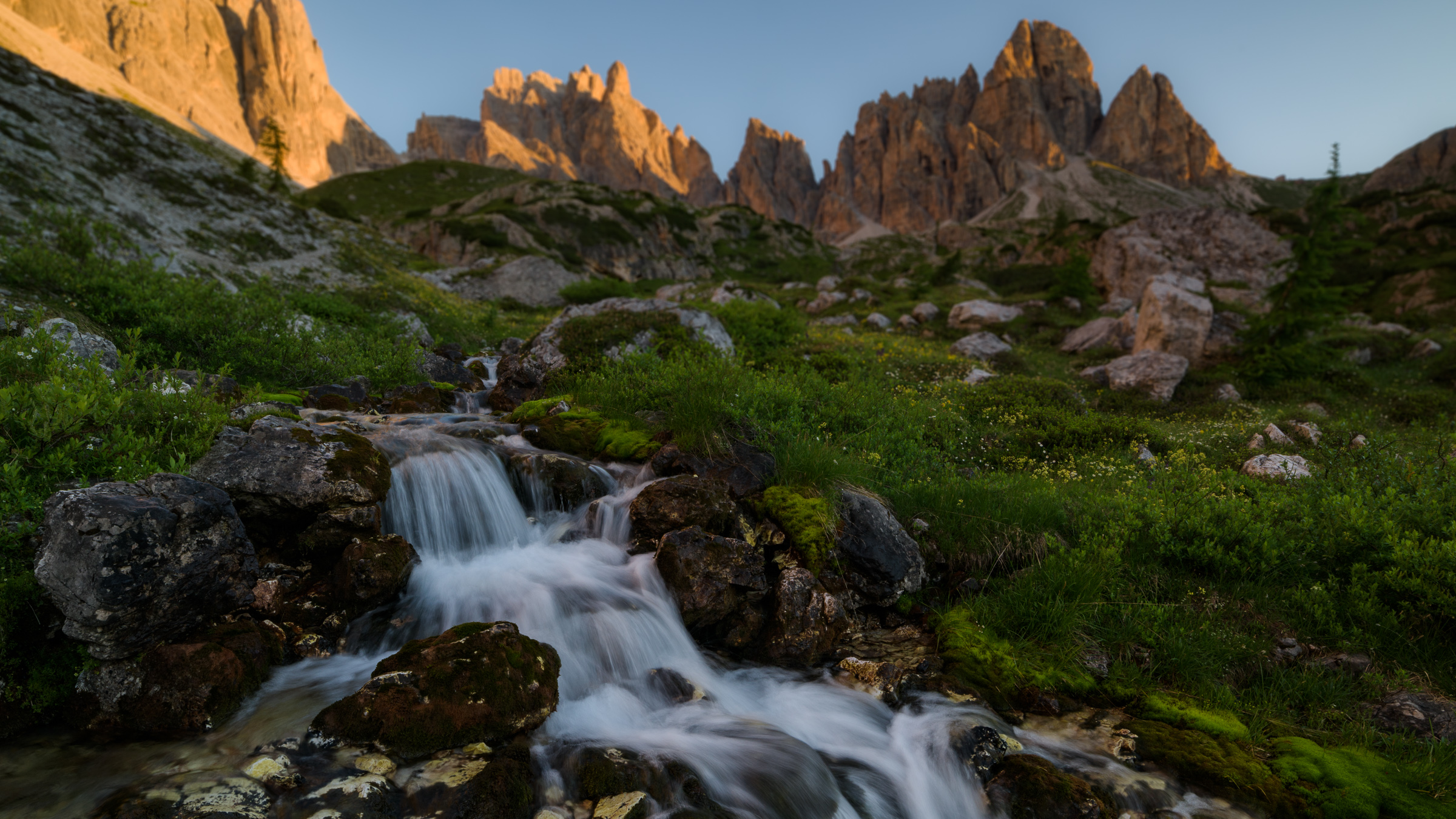
With a deeper DOF, the mountains in the background are now also in focus, which allows the viewer’s eye to traverse more of the frame. Neither choice is wrong or right; it all depends on what you want to accomplish with your shot.
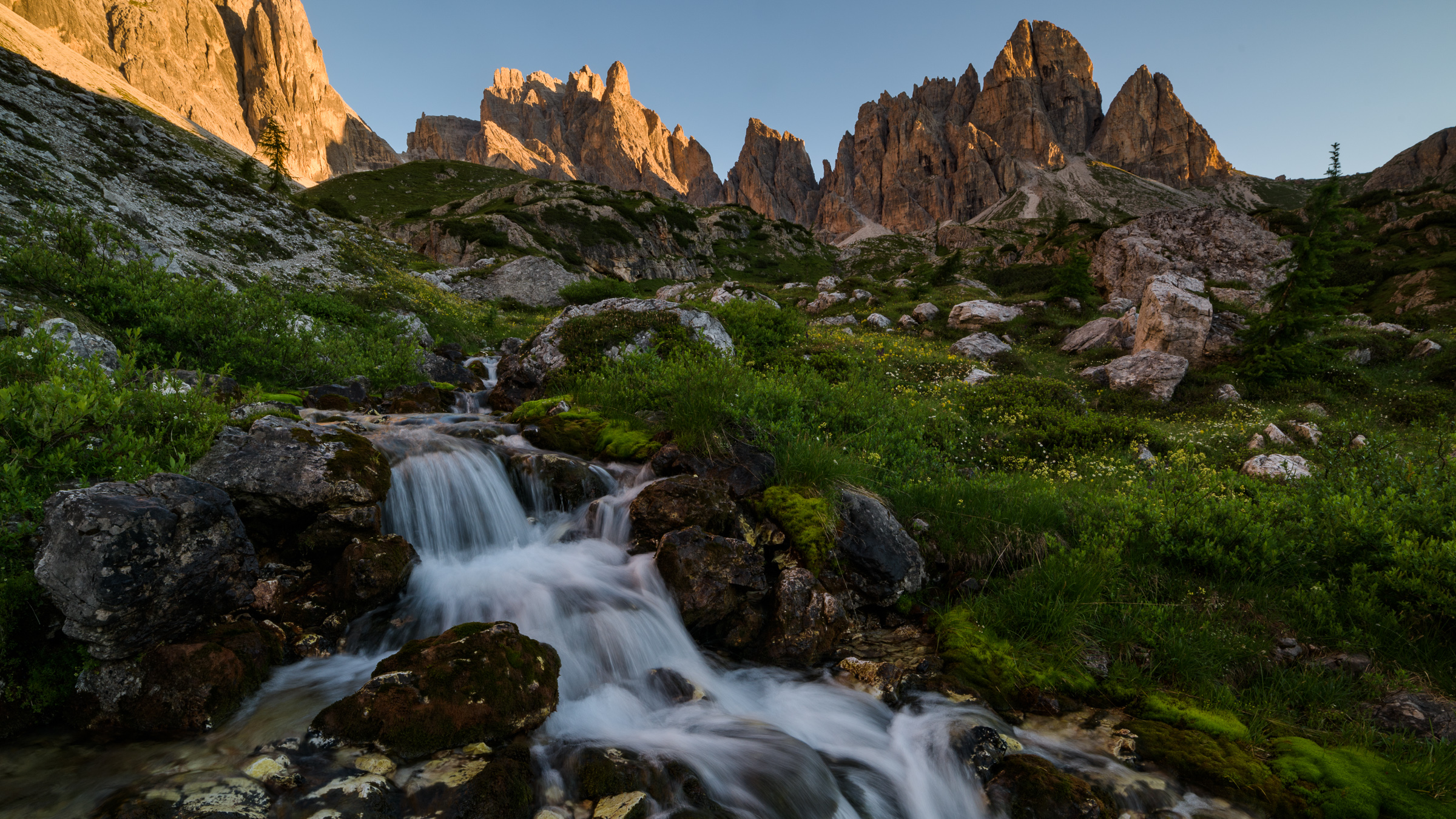
95% of the time your ISO should be at its lowest base value. You should only change it if you are trying to achieve a specific shutter speed.
How are you feeling in the moment? Use shutter speed to capture motion in a way that matches your emotions.
In this scene my artistic desire with this scene was to showcase the water flowing around this gigantic arch. By playing with my shutter speed, going from roughly 1/6 second (top) to 1/3 second (middle) to 1 full second (bottom), I was able to capture the water motion that showed what I wanted to convey in the image.
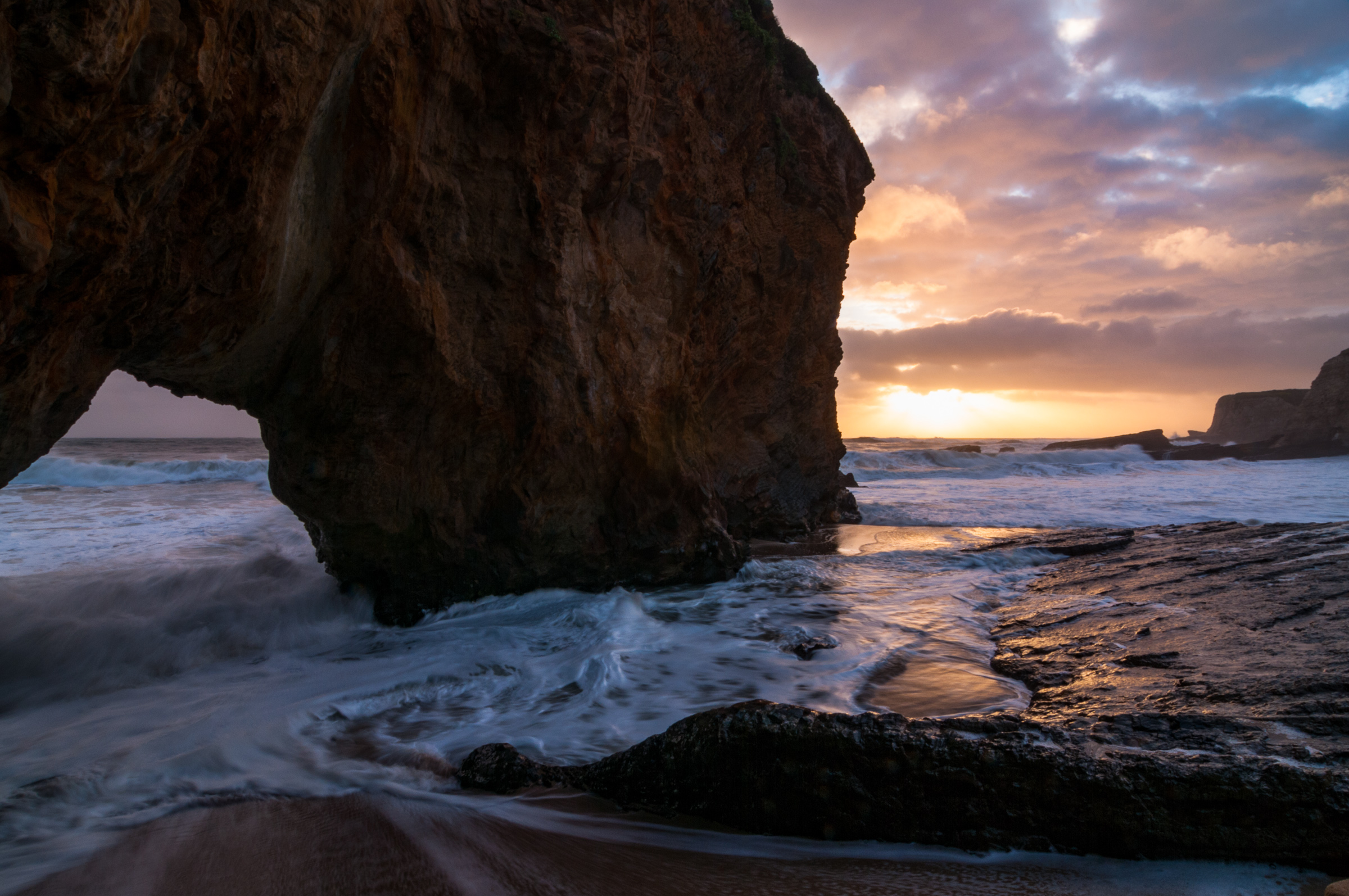
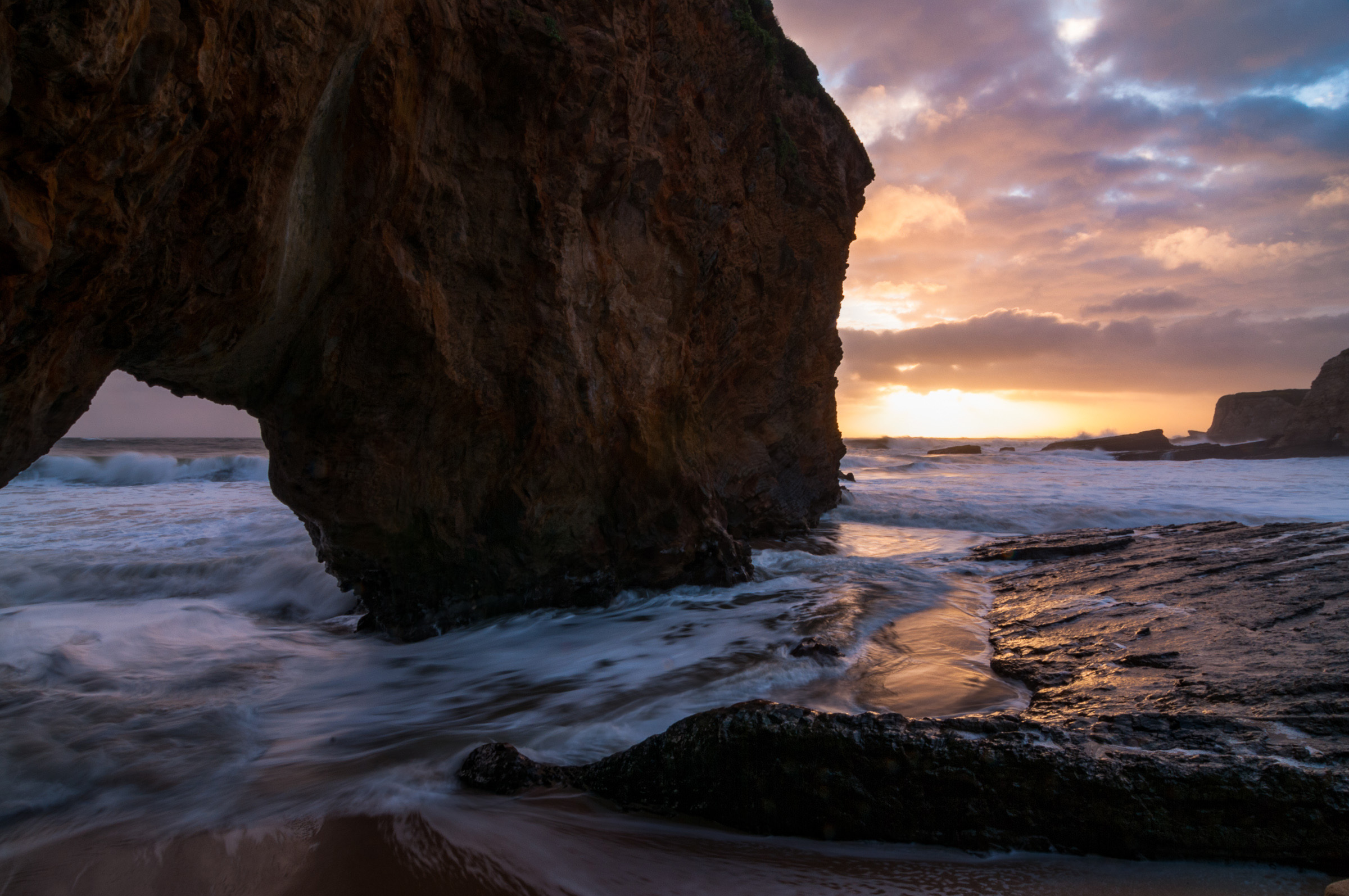
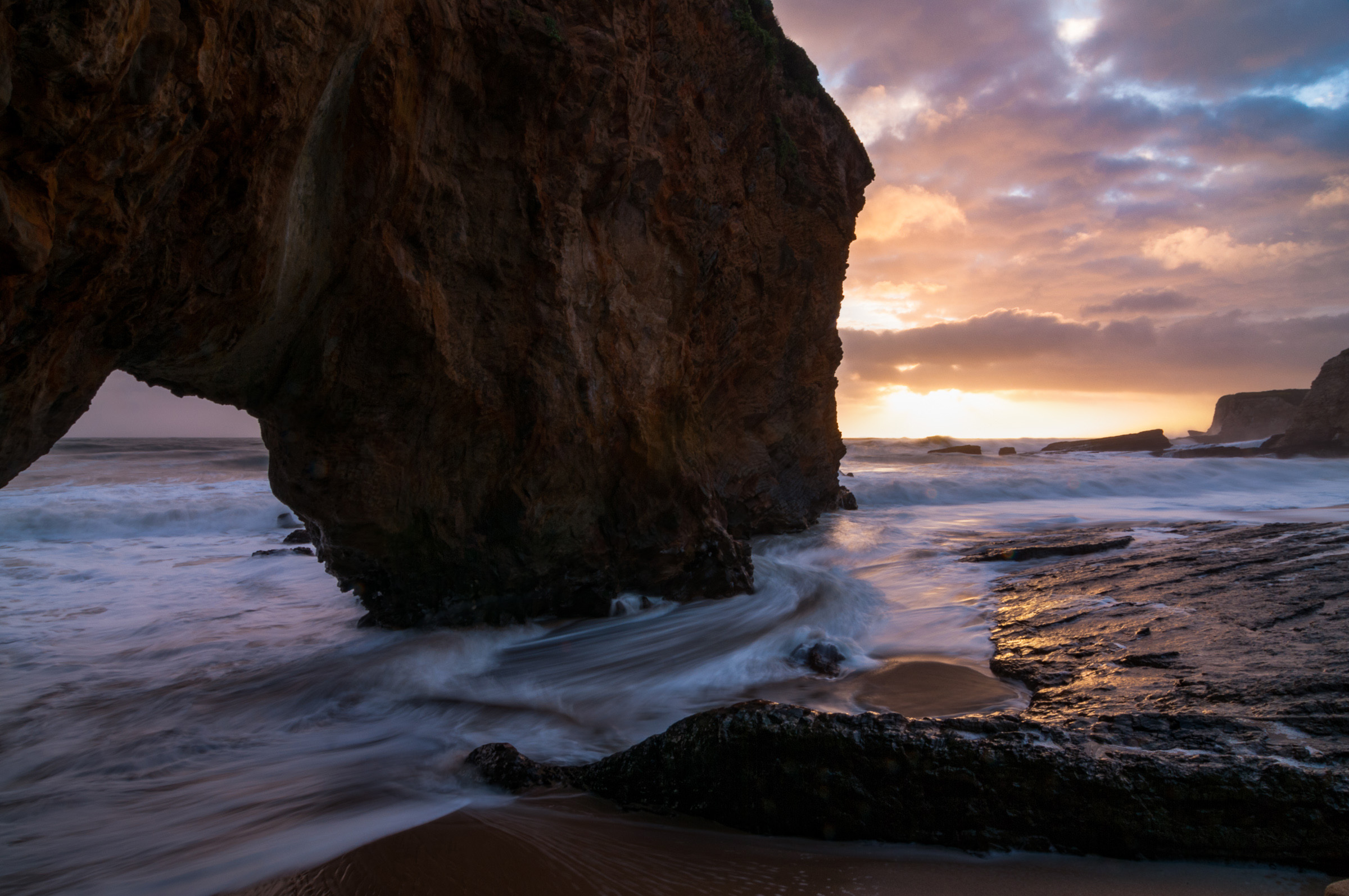
These flowers made me feel bright and joyful, so I exposed the image brightly to capture that feeling.
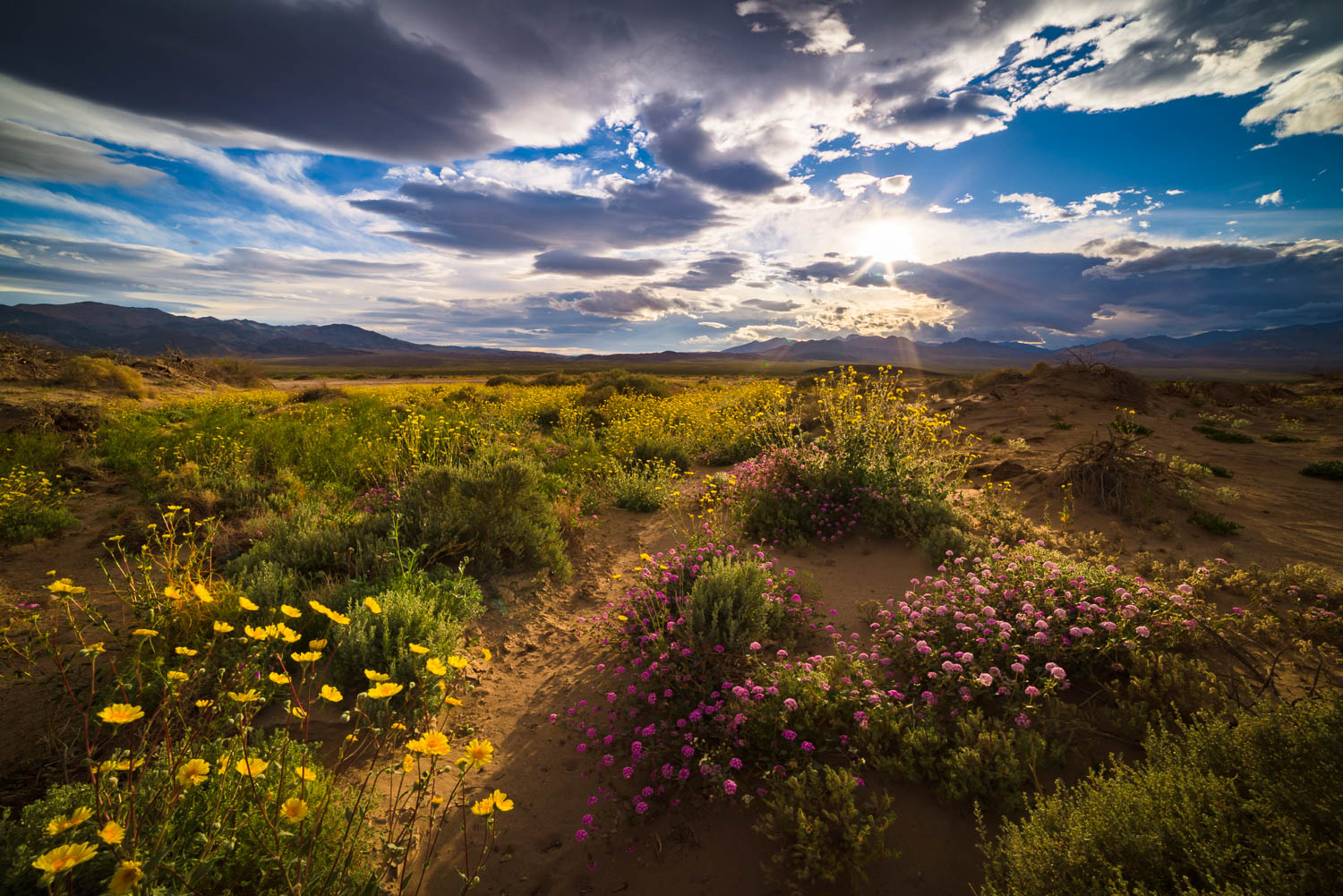
Underexposing the photo has the effect of making it more dramatic, and bringing out some cool details in the clouds. But it also completely loses the happy, joyful feeling.
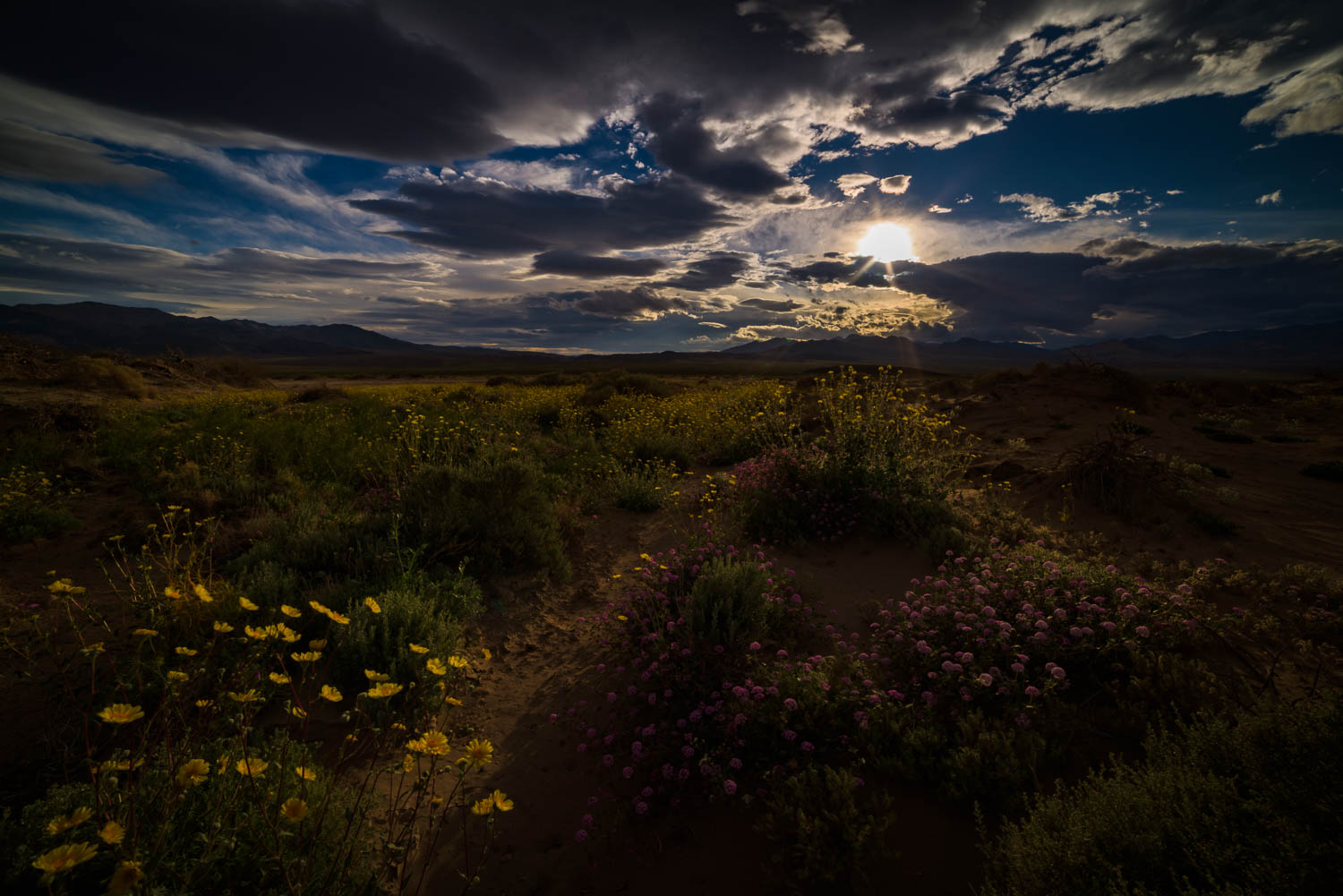
However, for this scene I wanted to create a slightly darker exposure to capture the drama, detail, and moody feeling of the overall scene.
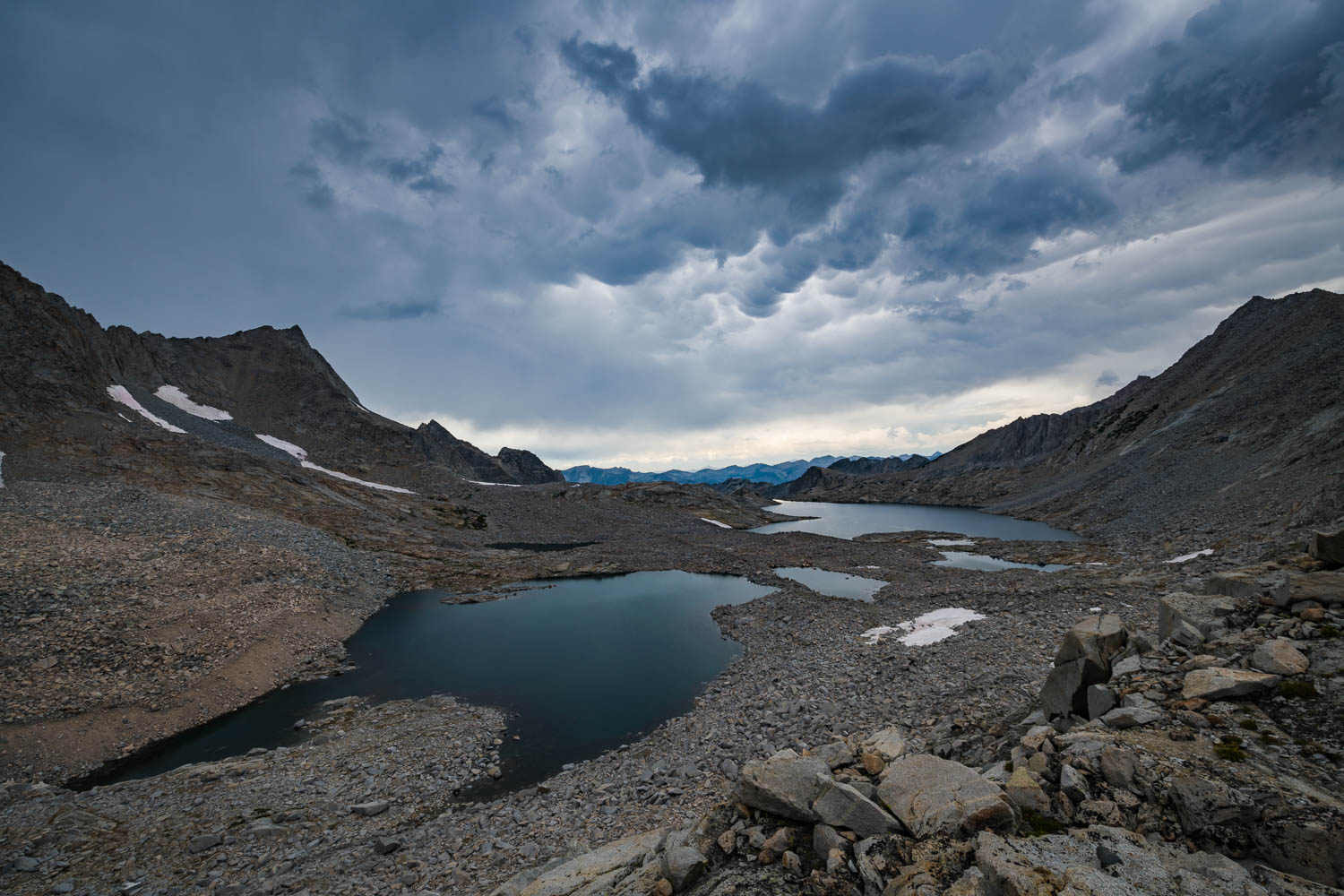
This much lighter photo, which some might say is a technically better exposure, completely loses the drama and mood of the darker shot.
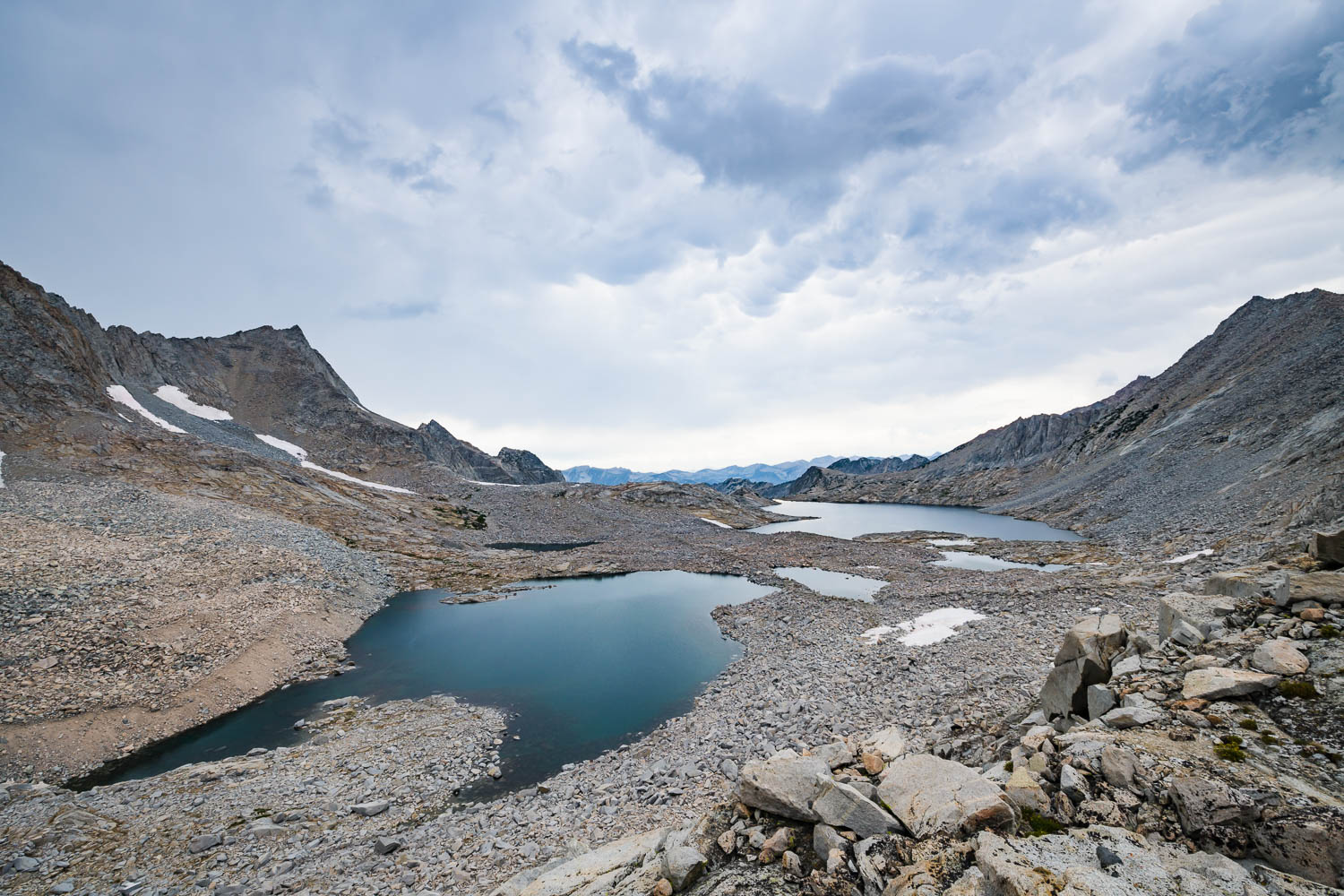
In this scene I was struck by the beautiful color contrast between the warm light on the tree and the blue light in the sky. If I chose a cool white balance like in the upper photo, the warm light on the tree washes out. A too-warm white balance (middle) creates a muddy, faded look in the sky. Choosing a white balance in between allows both
the color of the tree and the sky to shine through (bottom).
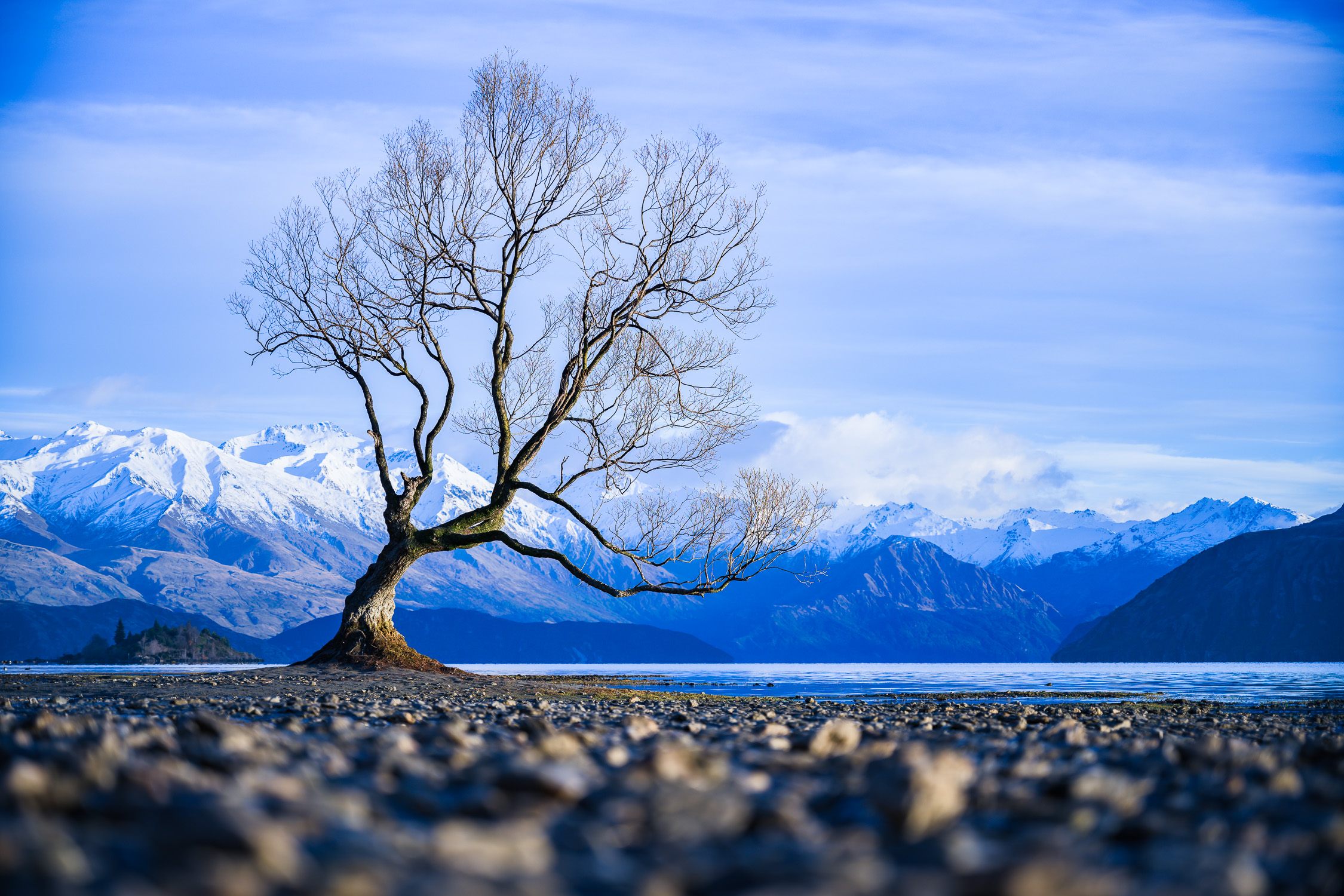
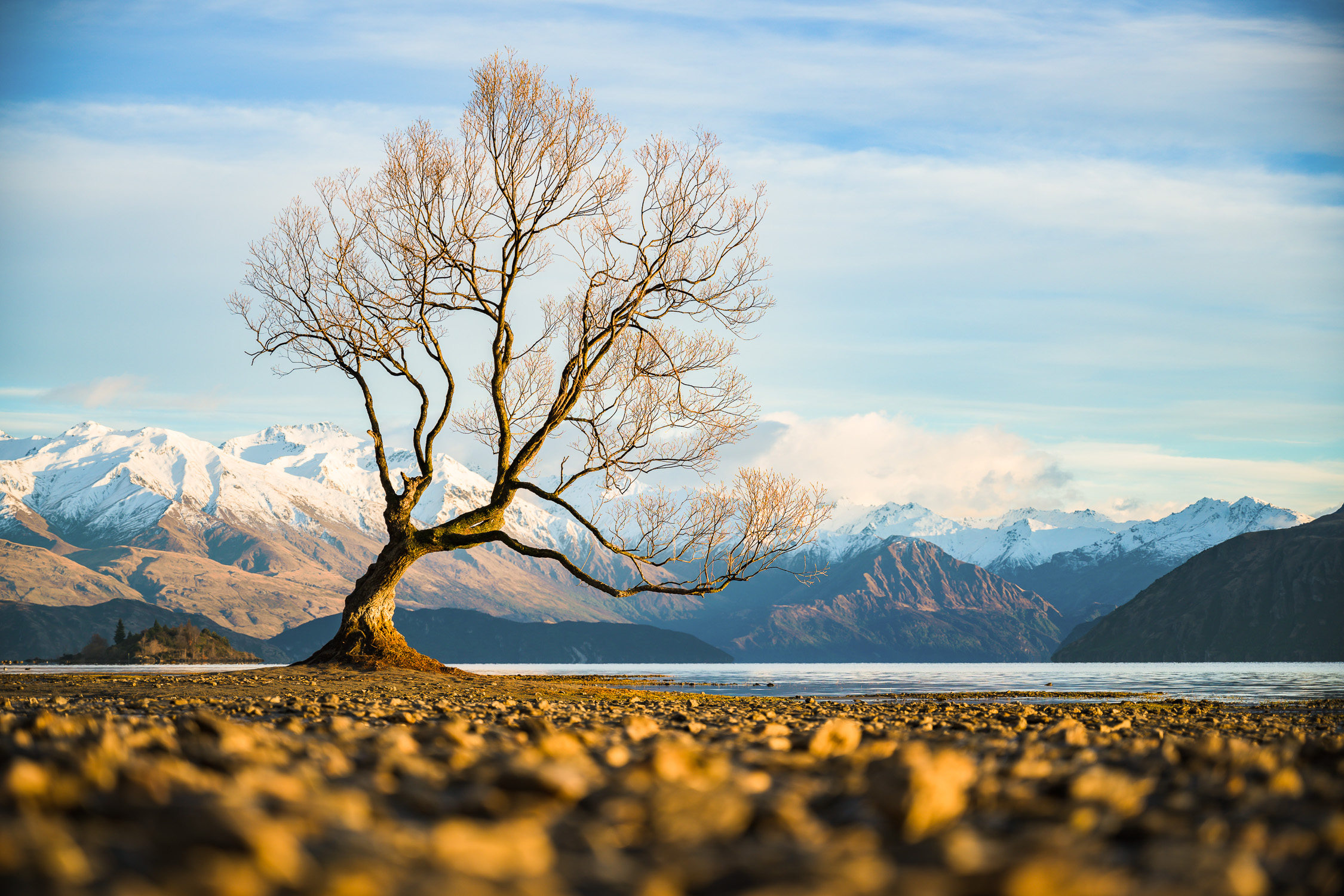
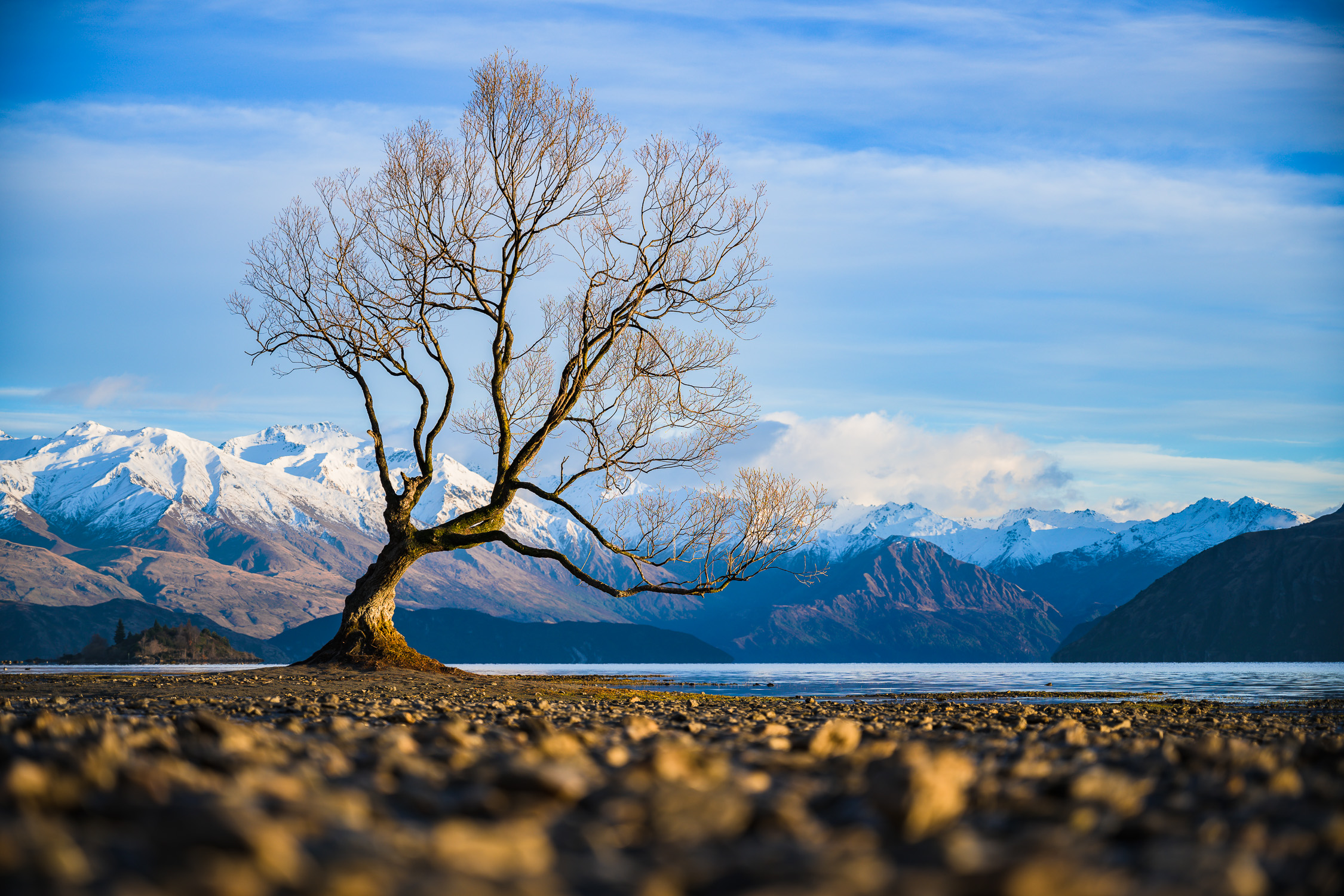
Light
Good light for a photo is generally anything that you find interesting, beautiful, uncommon, or unusual. And as always, constantly ask if the light helps your story.
I was very excited to come across this field of flowers. However, this photo emanates dreariness, not excitement. That’s because the light doesn’t match.
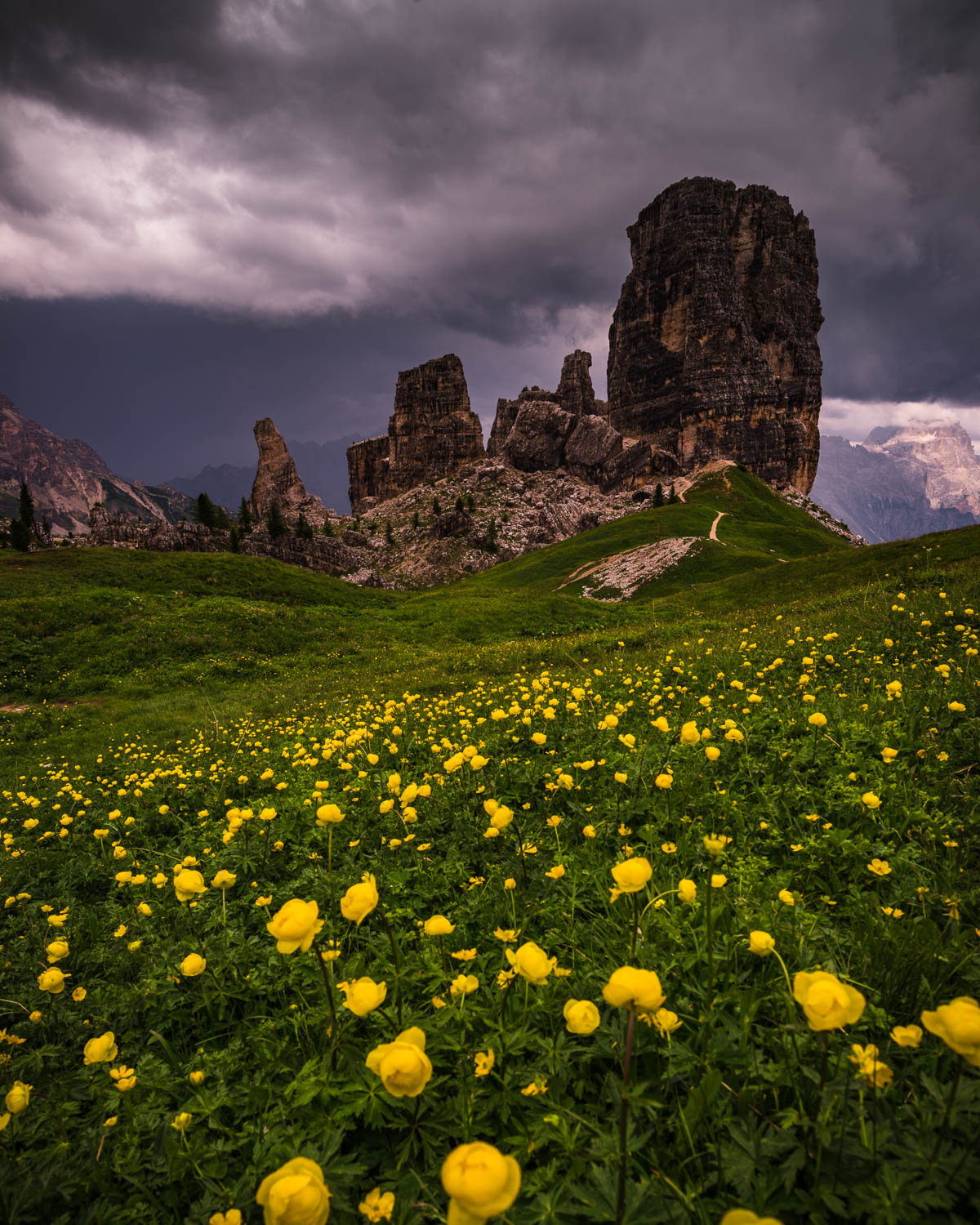
By waiting for a clear break in the skies, I was able to photograph the same scene when direct sunlight was striking the flowers, creating a much more exciting, uplifting feel.
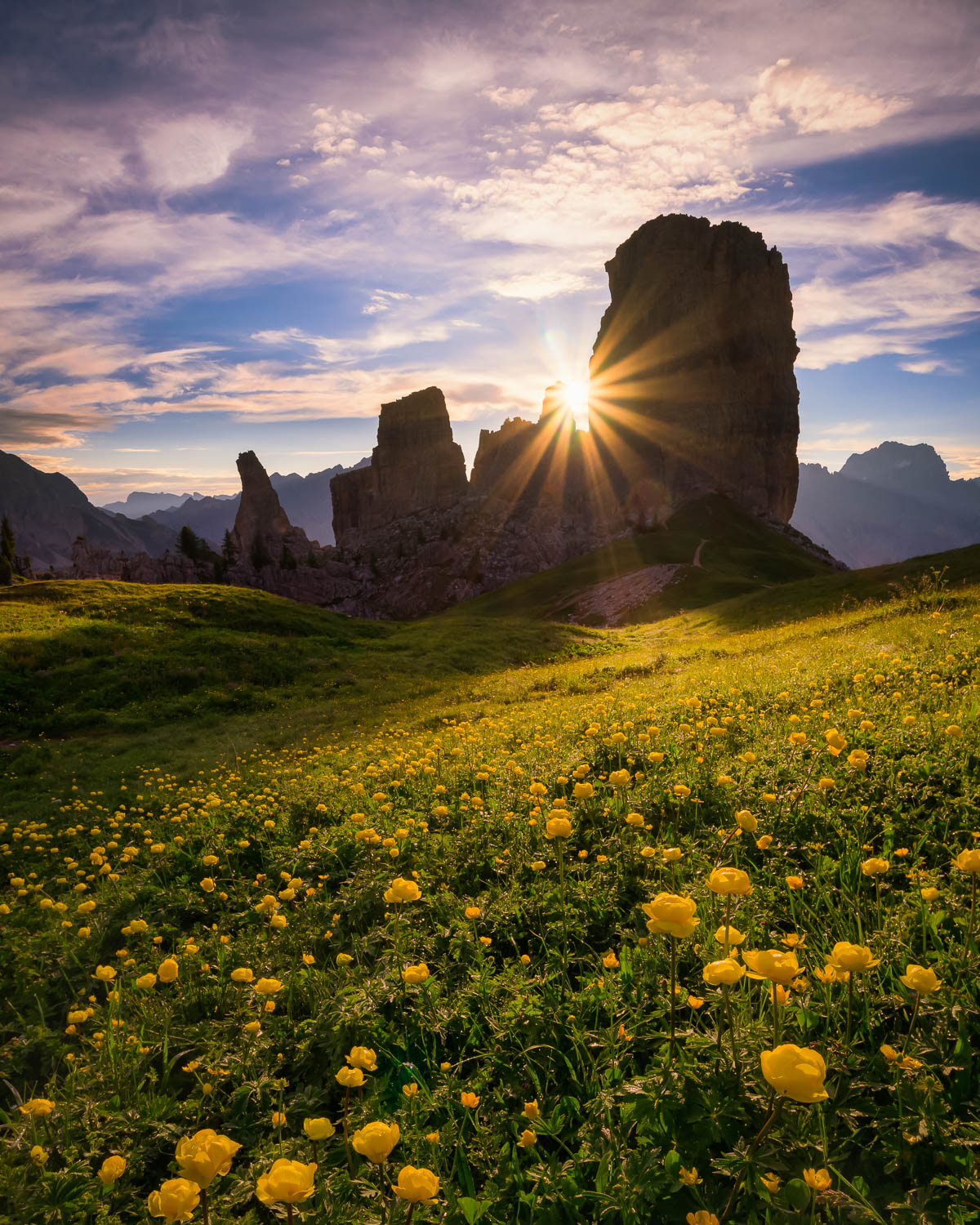
Assess the quality of the light.
The light on this scene is extremely soft and indirect. While this can be wonderful light for shooting waterfalls or portraits, in this case it makes the scene feel flat and two-dimensional.
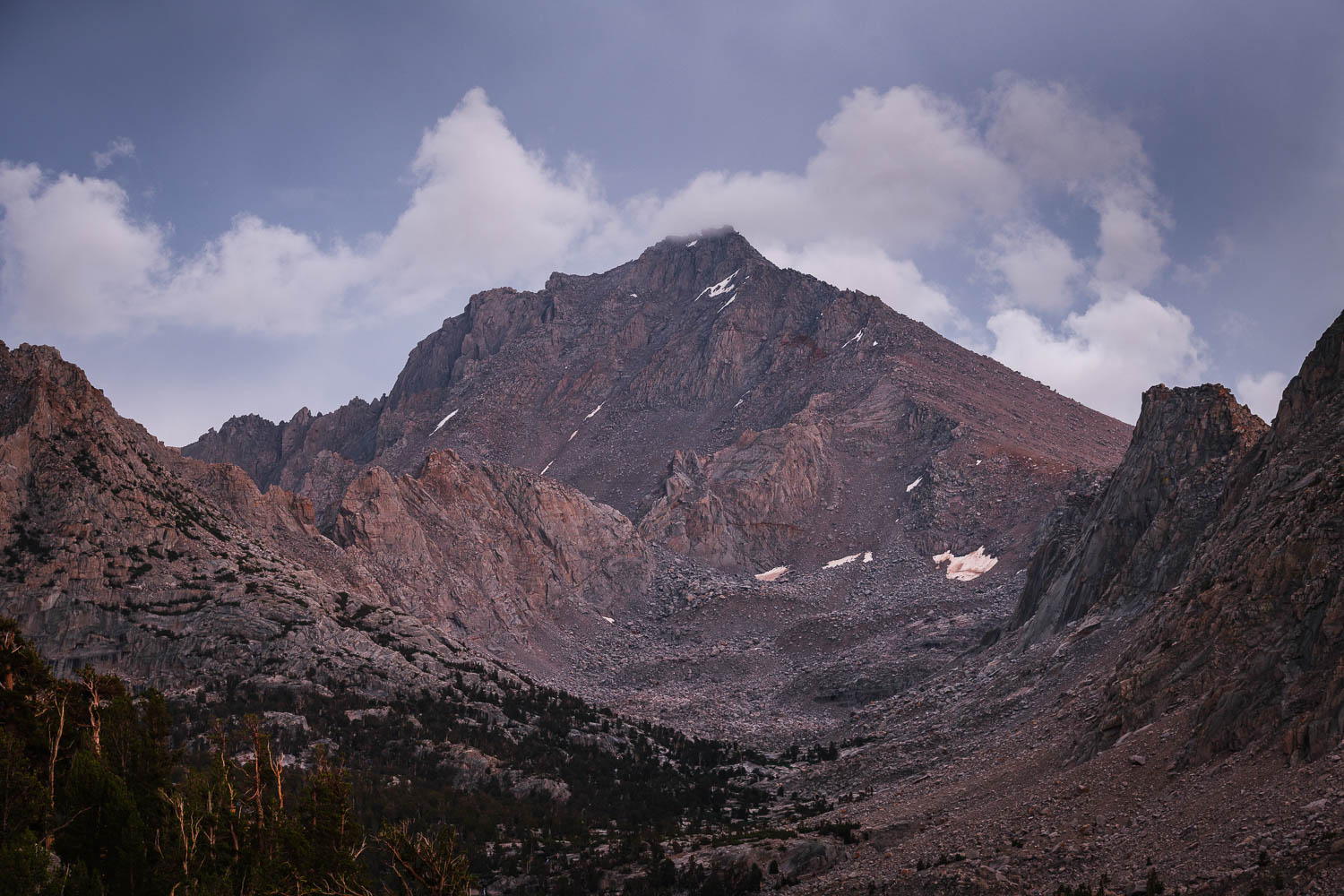
A break in the clouds later on allowed strong, direct light to shine on the mountains. Note how the layers of light and shadow create much more depth and dimension in the exact same scene and composition. Also note the direction of the light: it’s almost perfectly horizontal. Generally speaking, direct light is more interesting when it’s horizontal, instead of vertical.
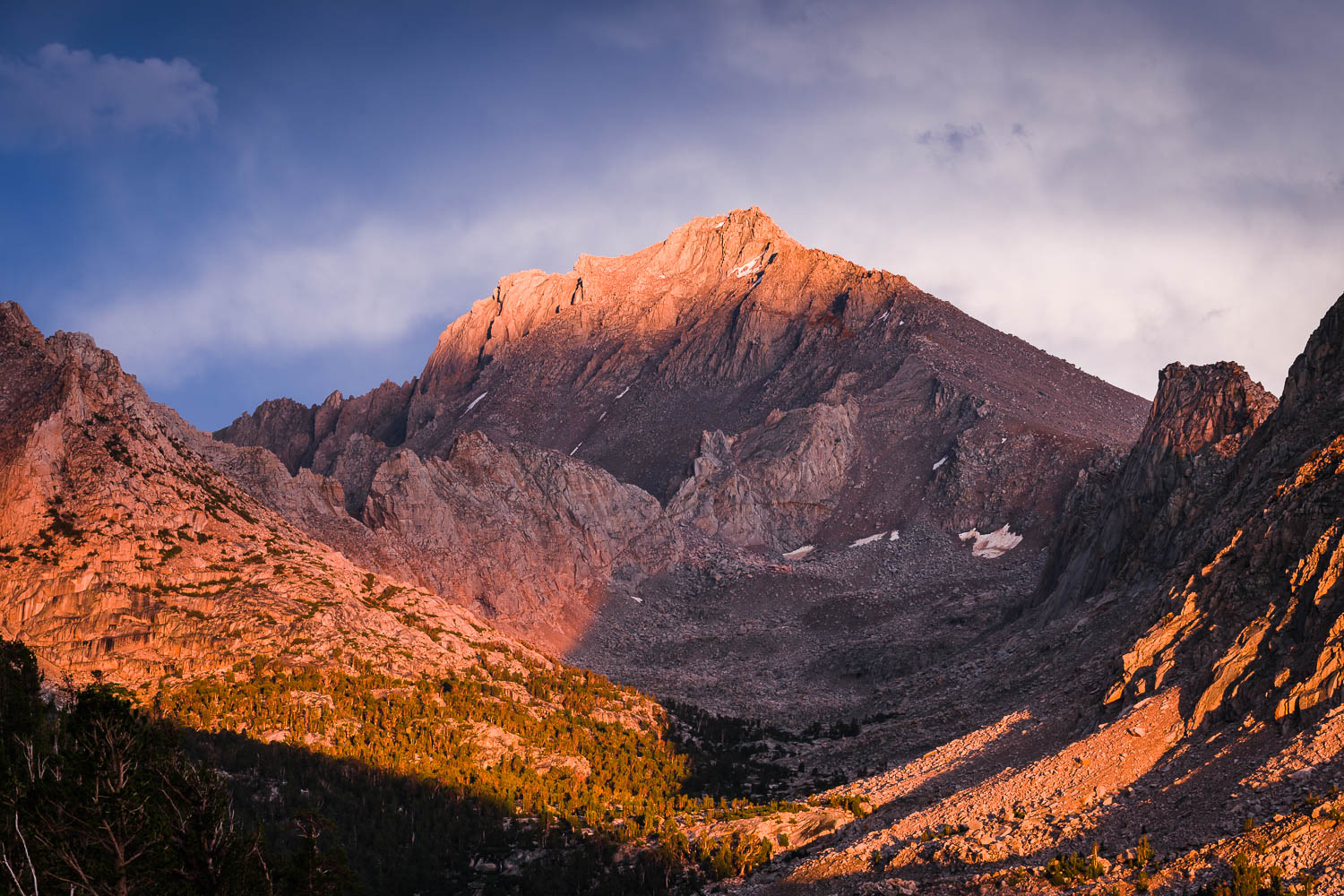
Sometimes waiting just a few minutes can be the difference between capturing a wall of rain…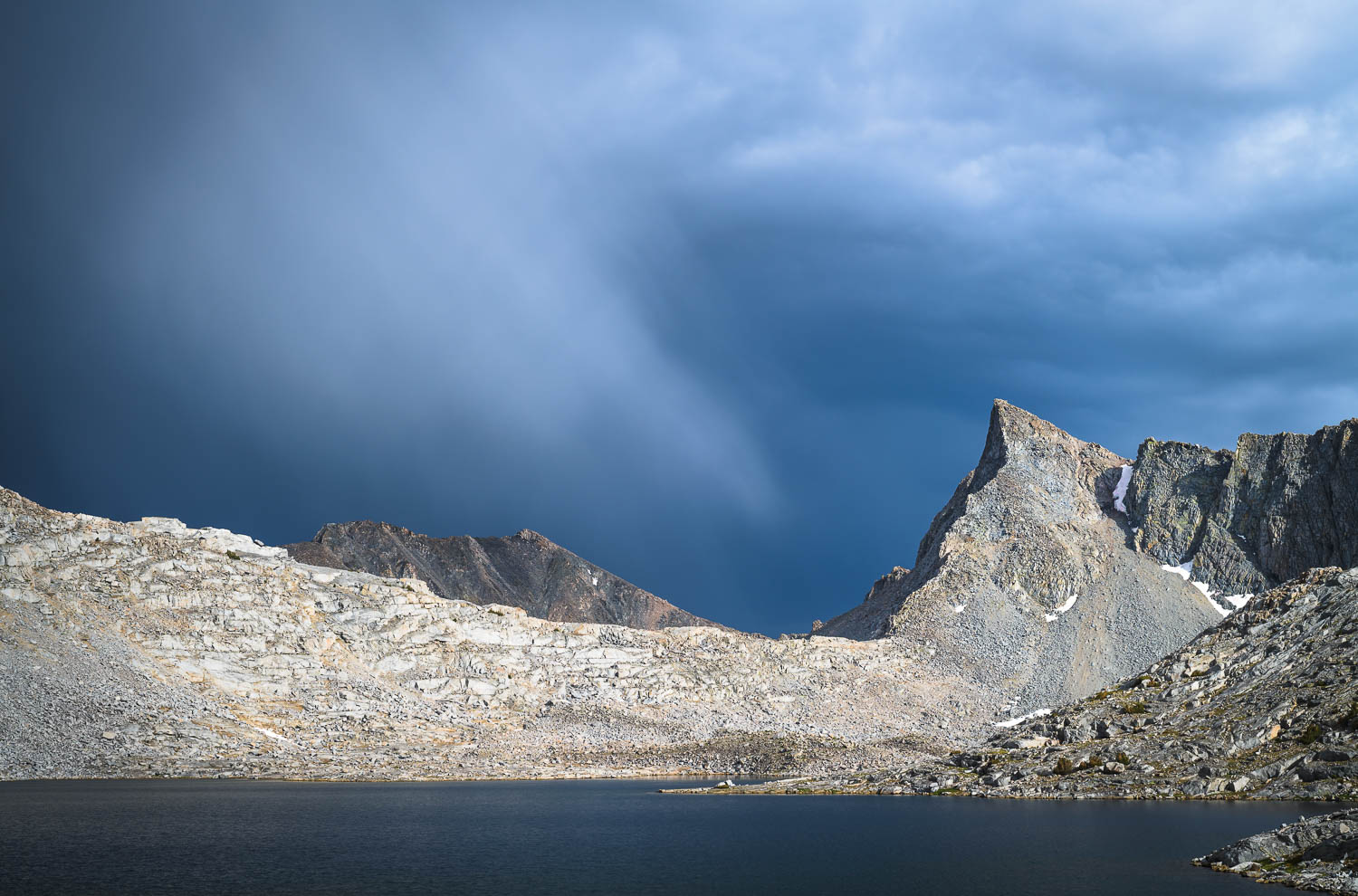
…and a magnificent rainbow.
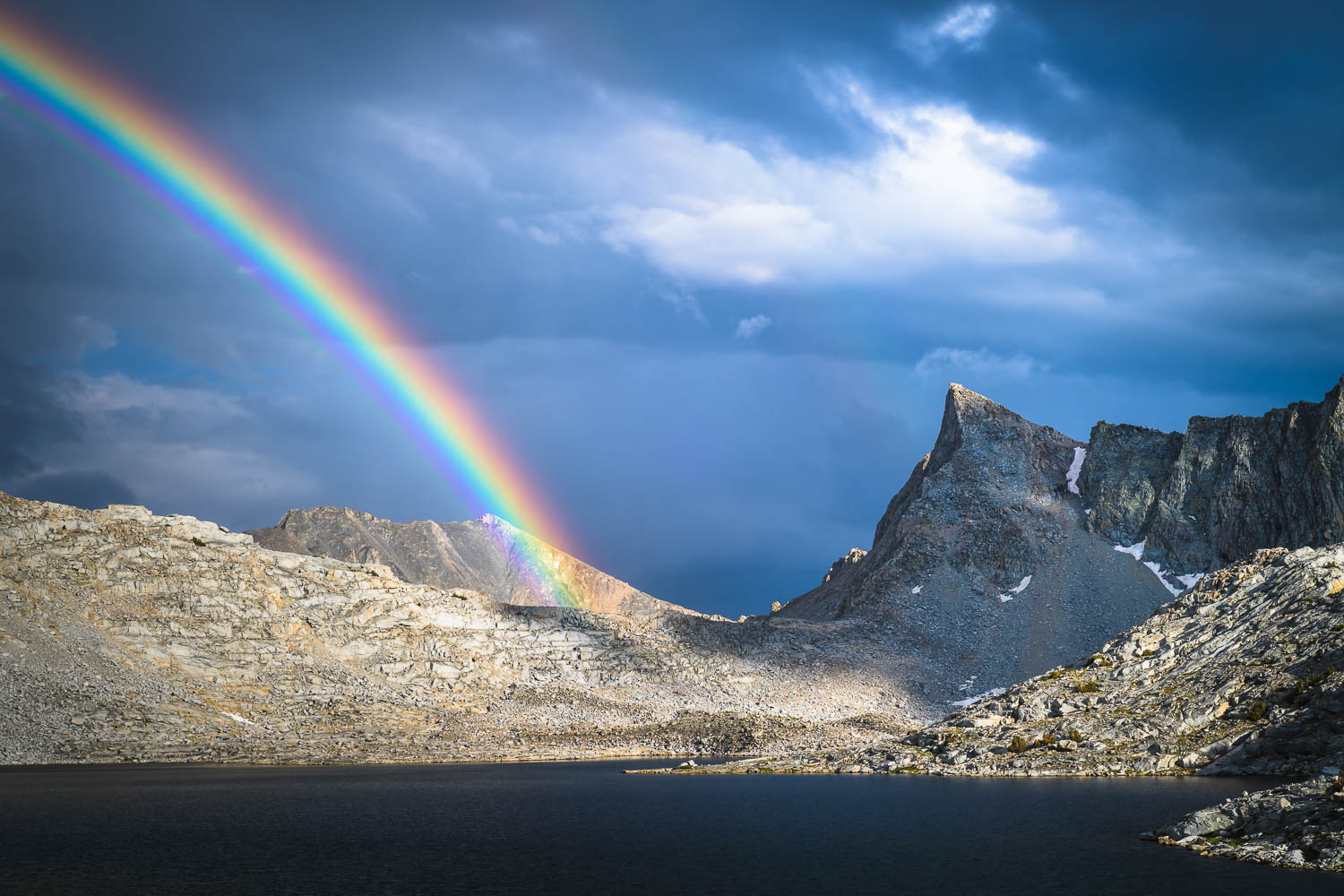
This scene was shot just after the sun had dropped behind the mountains. The scene feels quite cool, and there is a huge dynamic range: bright skies and dark ground.
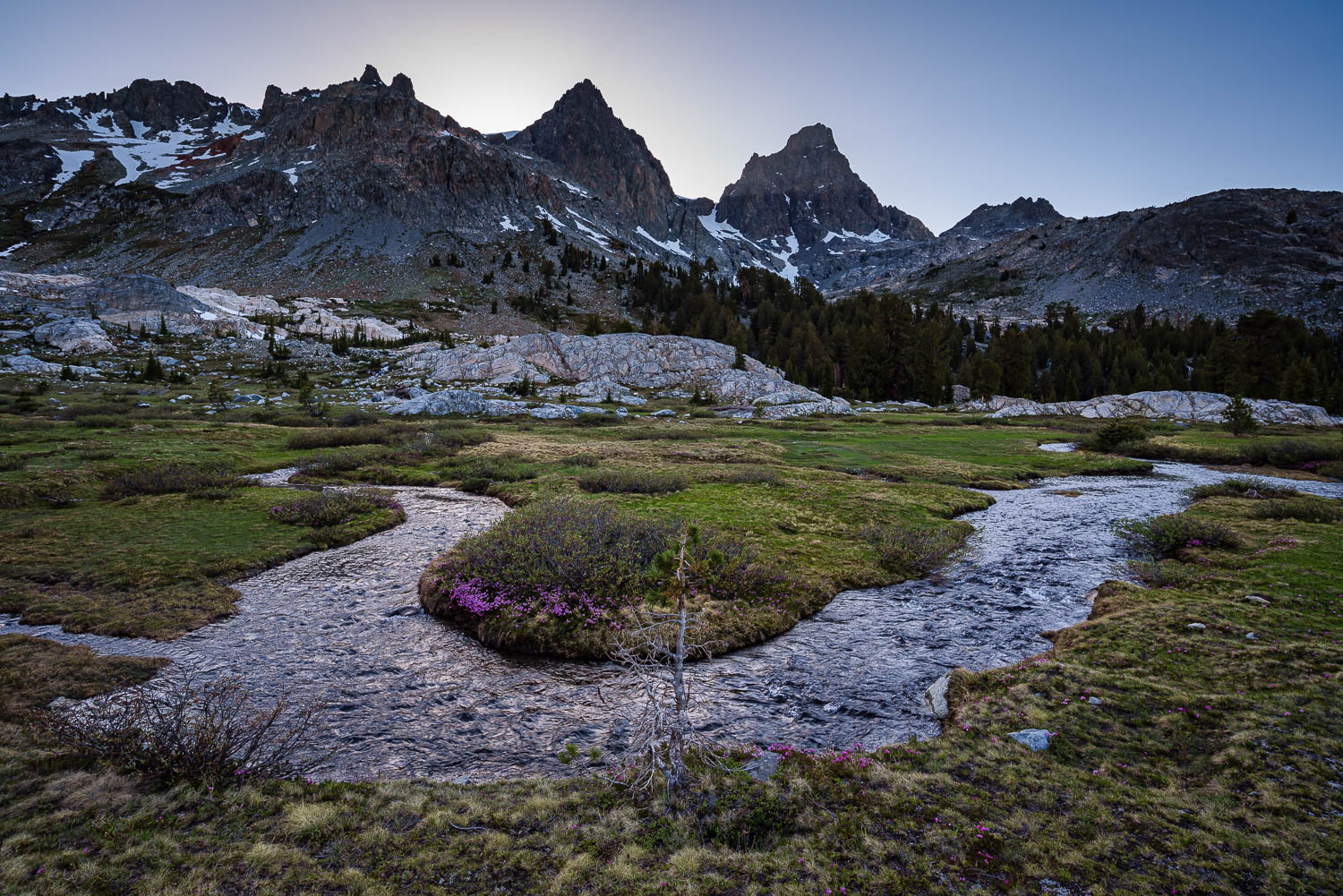
But 10 hours later at sunrise the same scene looks completely different, with rich colors, vivid details, warm tones, and a smaller dynamic range. Again, there’s no right or wrong. It’s about what story you want to tell.
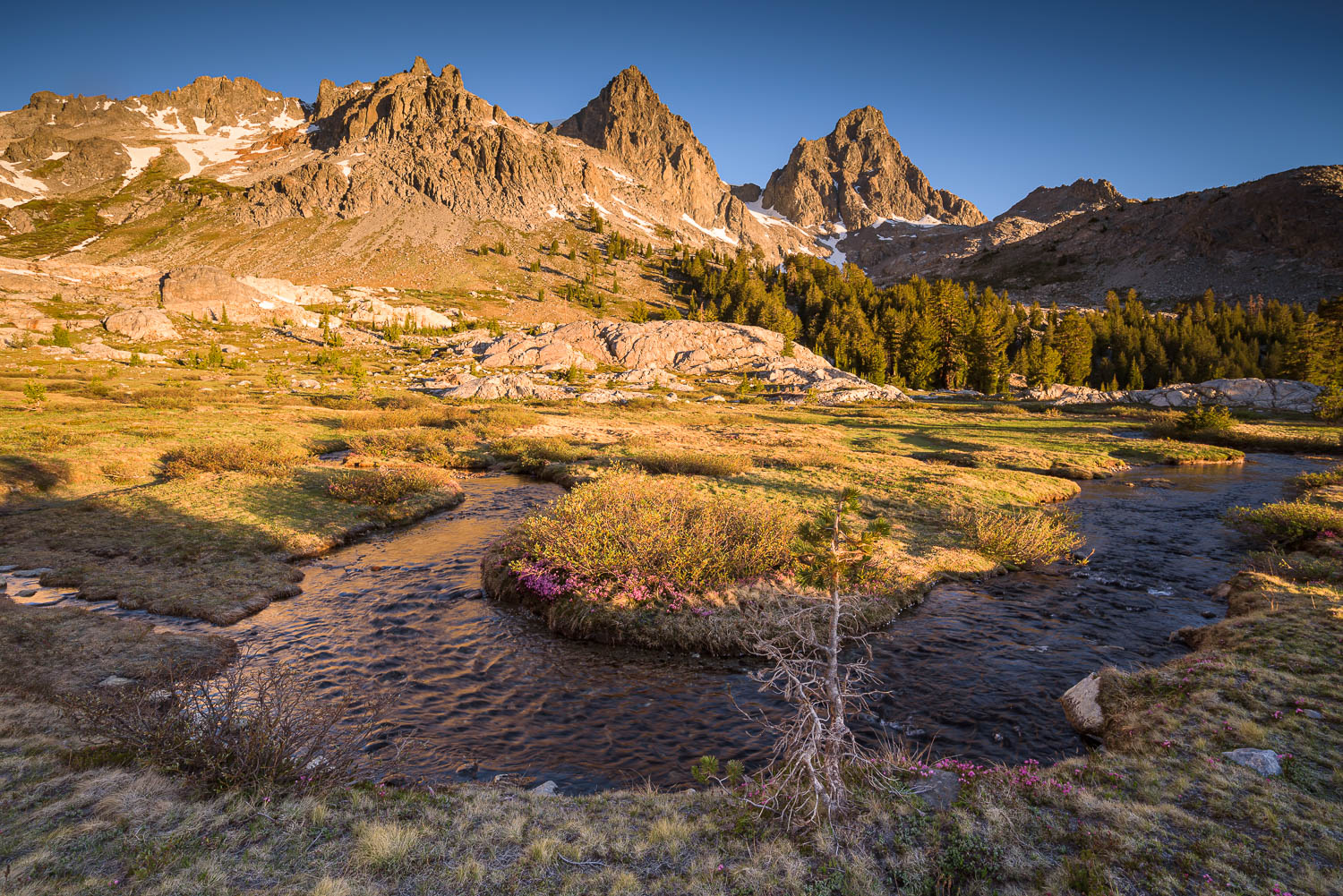
Polarizers help enrich the blue in the sky, and can cut haze and glare as well. Note how the colors in this scene feel slightly washed out.
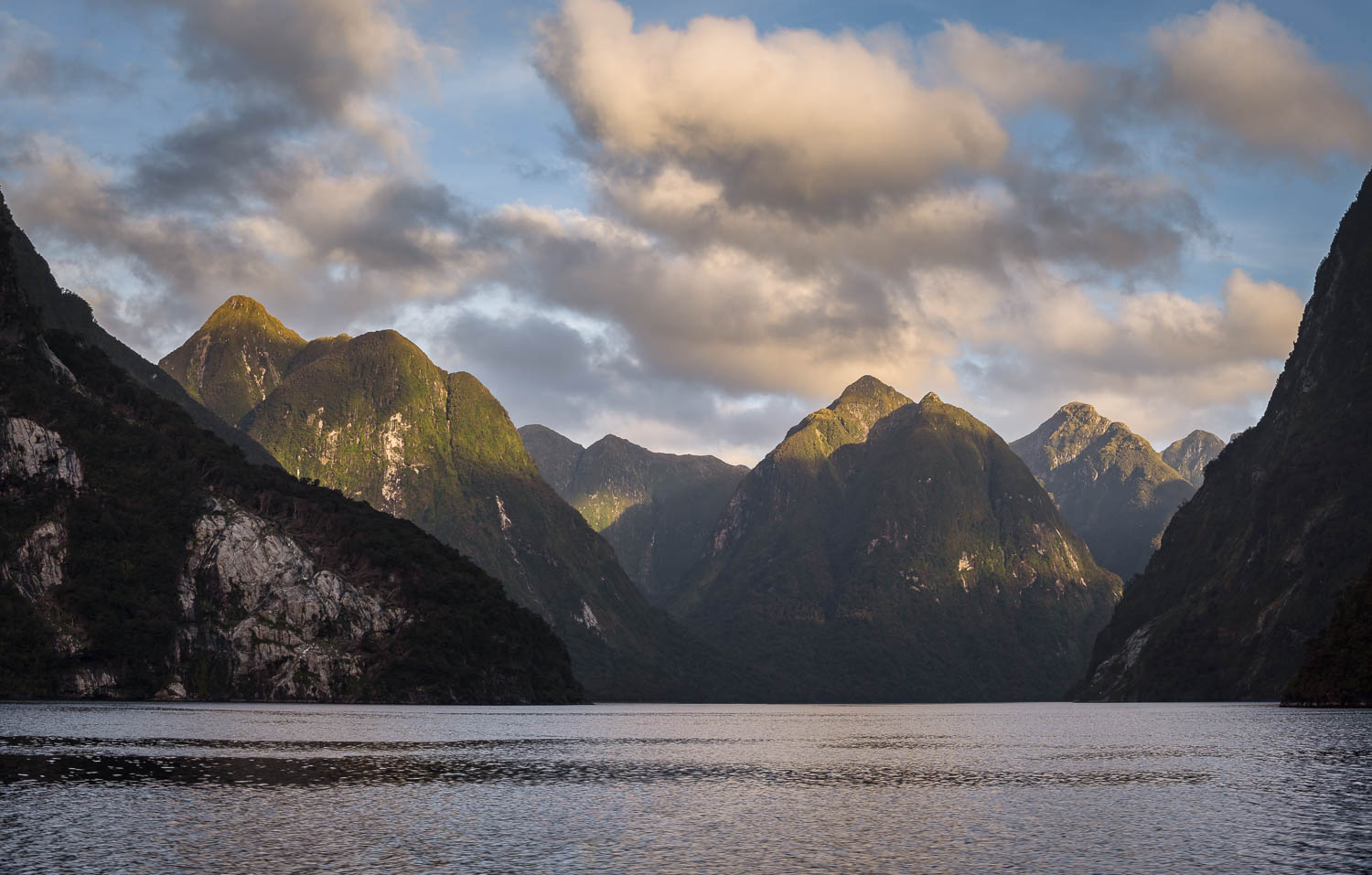
By adding a polarizer the sky pops, and more details come through in the mountains as well.
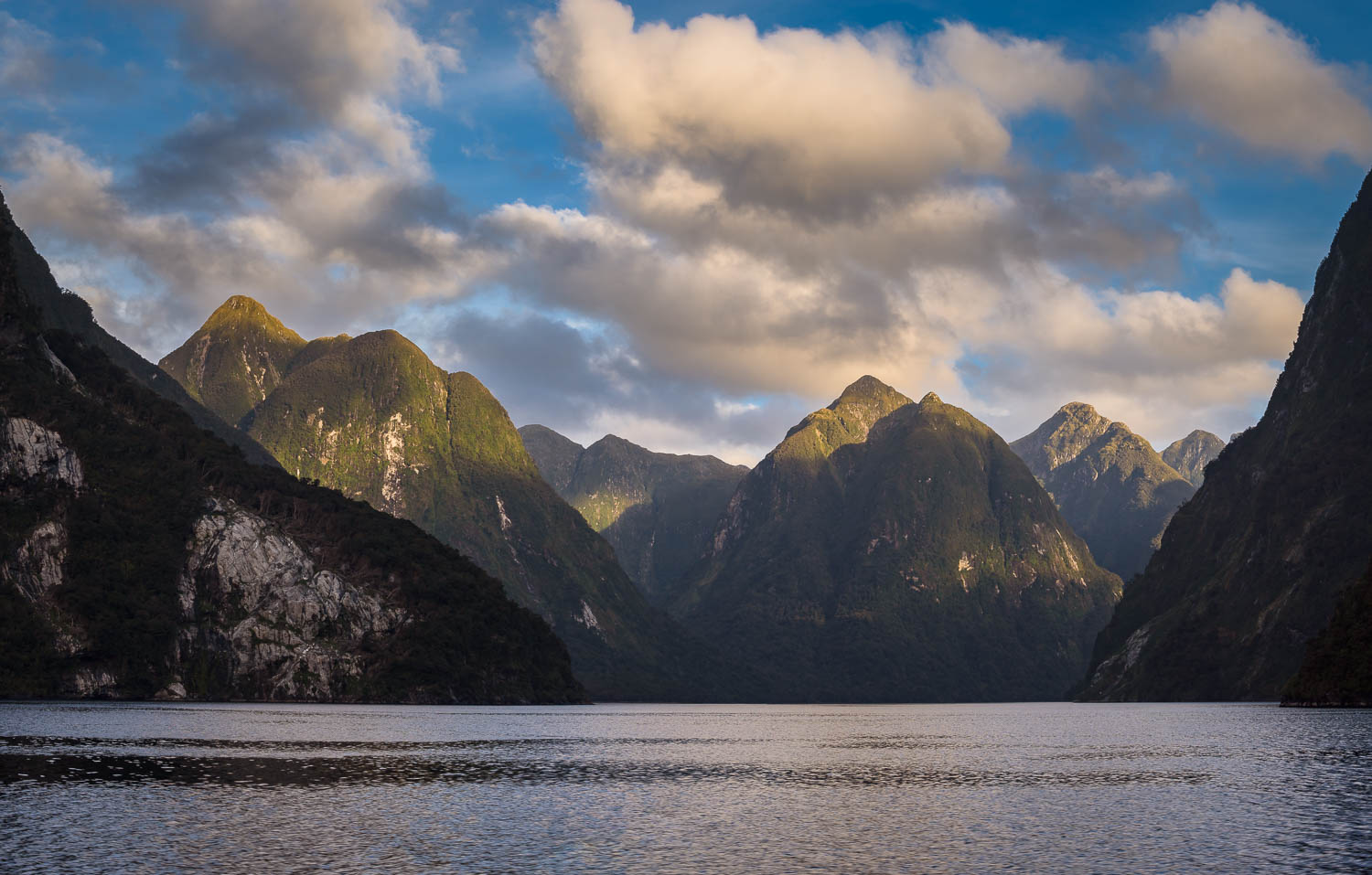
A great time to use a graduated neutral density filter is when the sky is much brighter than the foreground, as seen here.
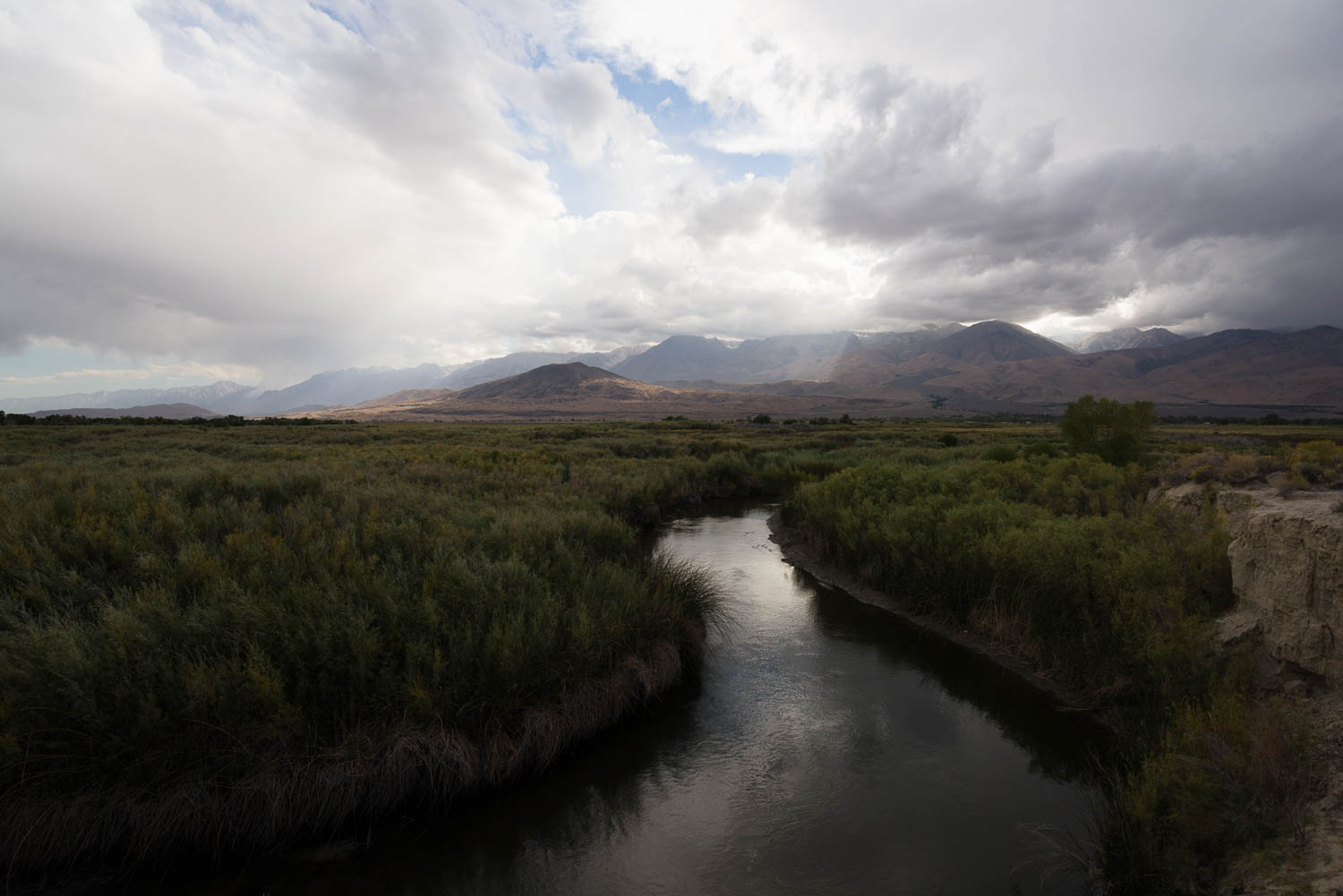
A GND can help you capture a bright sky and dark foreground simultaneously.
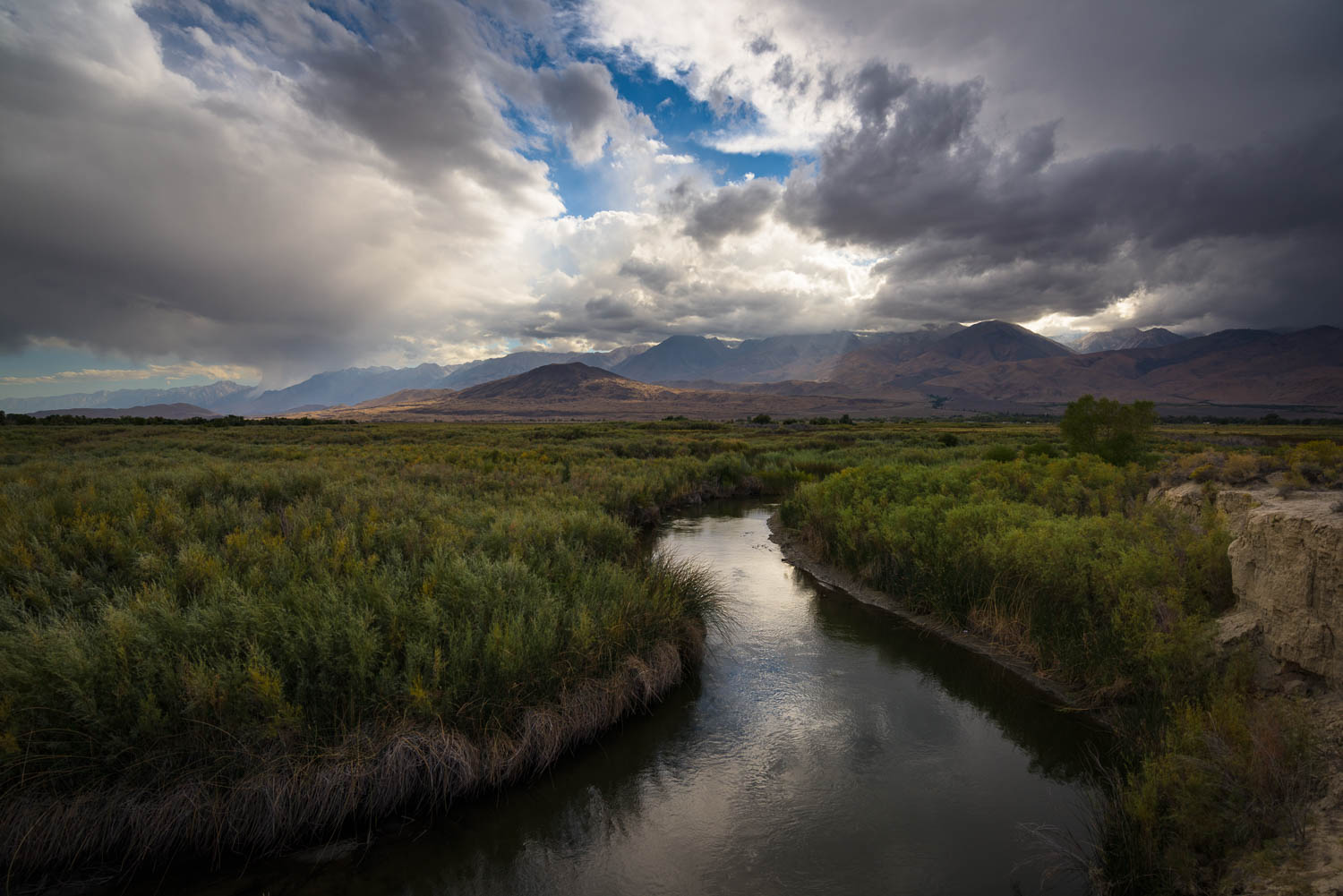
This is one of the most important lessons in photography: don’t let your expectations trap you into shooting something that isn’t working. In this wide-angle shot the overcast skies created flat, boring light on the landscape, and the photos weren’t very interesting.
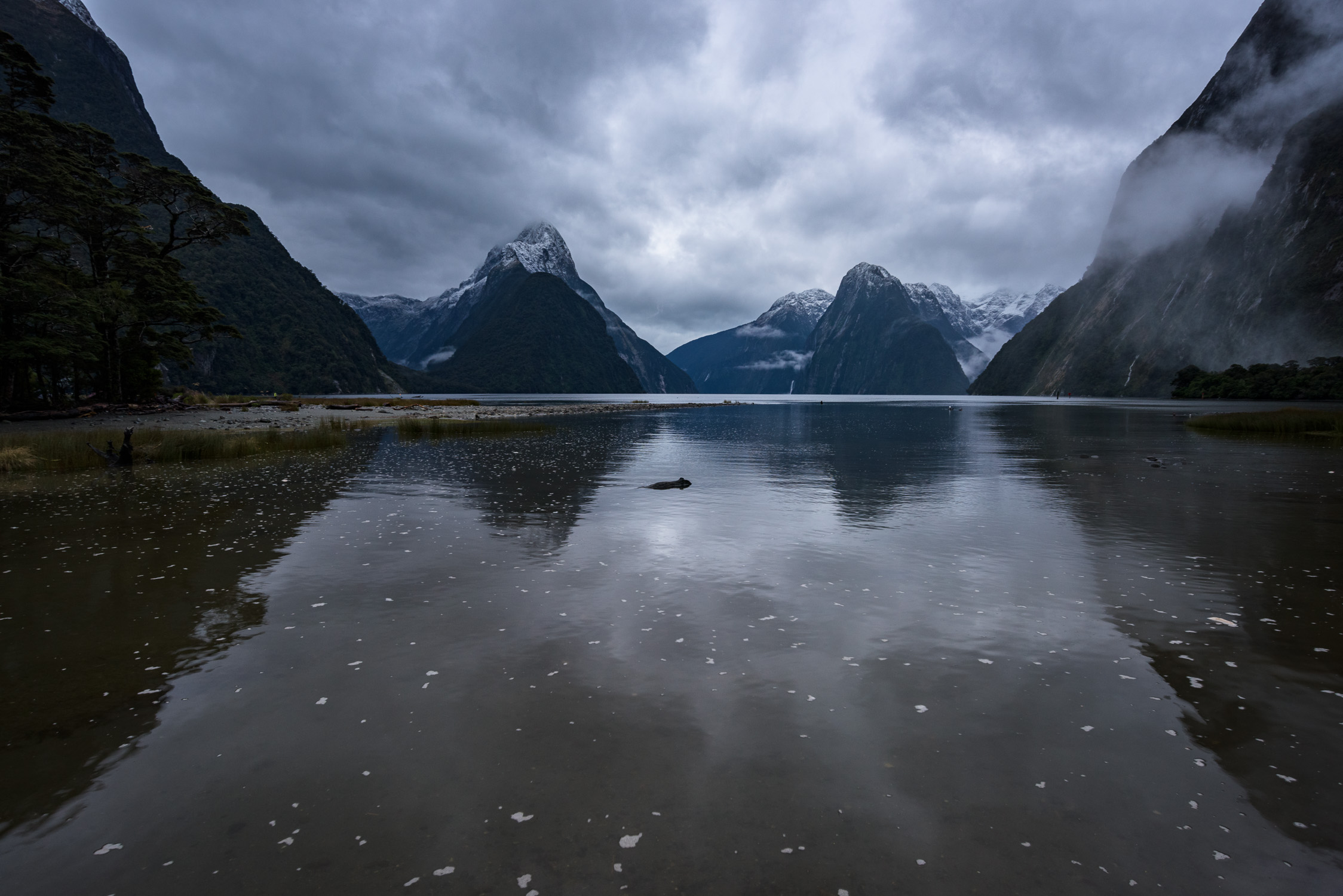
However, I noticed that the clouds were swirling around this one distant peak in a very beautiful way. I used a telephoto lens with along exposure to capture this shot. Here, the overcast light worked perfectly to create an atmospheric, ethereal feel for a much more compelling photograph.
